{{ serie.name }}
Bartlett Design Research Folios
ISSN 2753-9822
Founder of the Series and Lead Editor: Yeoryia Manolopoulou Editors 2022: Barbara Penner, Phoebe Adler Editors 2015: Peg Rawes, Luis Rego Content: © the authors
Graphic Design: objectif Web Development: Leon J Harris, Queo
© 2008–2022 The Bartlett School of Architecture Disclaimer
The Bartlett School of Architecture
22 Gordon Street London WC1H 0QB
+44 (0)20 3108 9646

- About the show

Index of Works
- B-Pro Show 2023
- All Bartlett Shows
Copyright 2024 © The Bartlett School of Architecture, UCL
Architectural Computation Thesis
‘At its core, intelligence can be viewed as a process that converts unstructured information into useful and actionable knowledge.’ Demis Hassabis, Financial Times, 21 April 2017
The Bartlett’s Architectural Computation MSc and MRes programmes engage and advance the main technologies through which tomorrow’s architecture will be both designed and constructed. The programmes are designed to provide students with the depth of understanding needed to utilise computation fully in the context of design, research and industry.
Students investigate computation as a technology that is responsible for driving fundamental shifts in industry and society by changing the way we produce and think. They develop technical knowledge, such as computer coding, not only as a skill to be practised, but also as a framework for thought. A broad theoretical understanding of the algorithms and philosophies of artificial intelligence (AI) and related domains supports this technical knowledge. Theory modules position the use of computation in the design process, ranging from analysis in space and structure, to the use of AI techniques in learning about design performance and the role of computation in creativity. Practice modules allow students to develop their personal interests within a range of themes, such as technologies of interaction (augmented reality and virtual reality), cybernetics, physics simulations, AI, automation and robotics manufacturing including 3D printing. A stream of skills-based modules teaches research skills and programming, guiding students through the multiple possibilities that computation offers in design environments.
Throughout the year, students engaged with a wide range of digital media and tools to develop their projects through studio modules, workshops and lectures. The modules and theses produced research projects that included exploring computational methods for interaction and automated construction; the generation of architectural forms using AI; data visualisation applications for the built environment; and computational workflows for adaptable habitats, among others.
- Jose Tashakori
- Abhinav Goel
- Ayush Shekhawat
- Pournami Sujeev
- Sajid I Awal
- Konstantina Psatha
- Vaishnavi Shrikrishna Deo
- Dhruvinkumar Bhupendrabhai Kataria
Dezeen Magazine dezeen-logo dezeen-logo
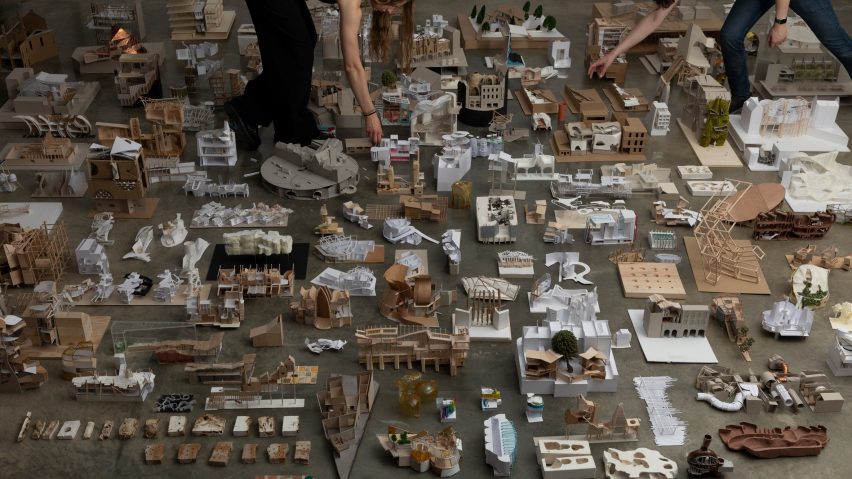
Bartlett School of Architecture spotlights 13 projects by architecture students
Dezeen School Shows: an AI research lab and data centre composed of modular cubes is included in Dezeen's latest school show by students at Bartlett School of Architecture .
Also featured is a school that nurtures friendship and creativity through architecture and a project informed by the Black Forest's traditional timber houses.
Bartlett School of Architecture
Institution: UCL School: The Bartlett School of Architecture Course: Architecture MArch (RIBA/ARB Part 2), Architecture BSc (RIBA/ARB Part 1), Architecture MSci (ARB Part 1 and 2), Engineering and Architectural Design MEng (ARB/RIBA Part 1, CIBSE, JBM), Architectural and Interdisciplinary Studies BSc Tutors: Marjan Colletti, Kostas Grigoriadis, Ana Monrabal-Cook, Max Dewdney, Sara Shafiei, Luke Olsen and Elizabeth Dow
School statement:
"The Bartlett School of Architecture is one of the most exciting, innovative and creative architecture schools in the world, where students learn today to build the world of tomorrow.
"The institution teaches an expansive programme of architecture degrees at both undergraduate and graduate level.
"The school's annual summer show shares the creative and thoughtful work of its students with a global audience, both online and in person.
"The diversity of projects and resonance of thematic concerns exhibited allows audiences to explore what is meant by 'architecture' and what it could be."
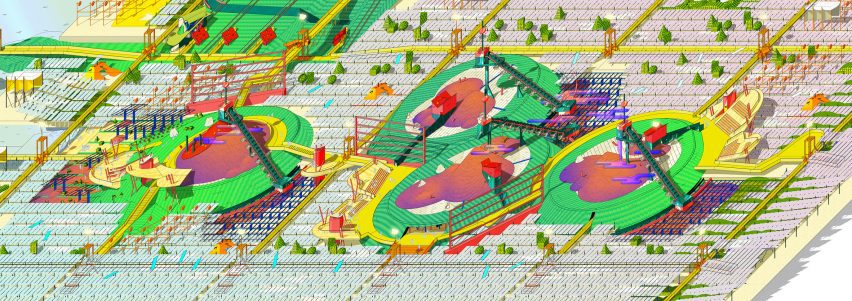
Silvertown Battery Park by Chia-Yi Chou
"Silvertown Battery Park is a scientific testing ground that portrays every possible and impossible technology. It is an off-grid energy infrastructure and a vibrant public space for local communities.
"The park demonstrates bold and trivial science imagination in a playful and immersive manner. The working infrastructure celebrates the industrial history and brings Silvertown into the next stage of transformation."
Student: Chia-Yi Chou Course: Architecture MArch Tutors: Laura Allen, Mark Smout and Tom Budd
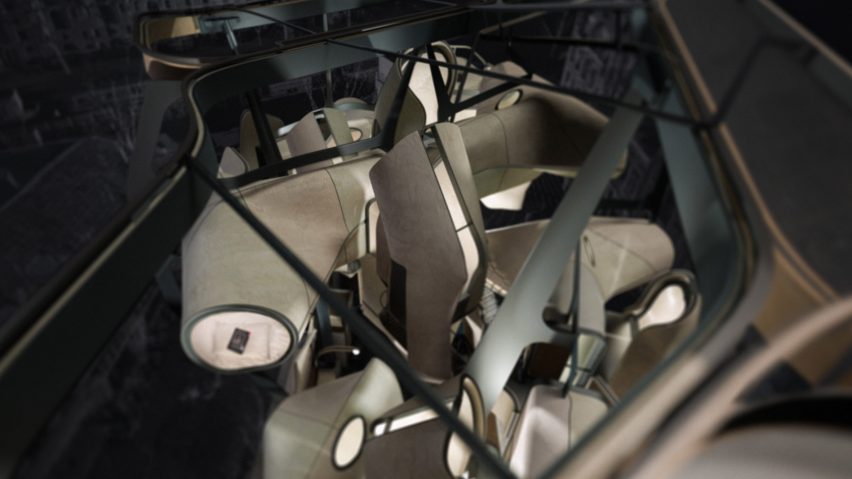
Laminated Vessels – Moulding a Hostel from Flat Sheets by Joe Johnson
"This project explores the design and fabrication of moulded timber components – laminated geometries with curvature in more than one plane, using a method that results in nearly zero waste.
"The project examines how curvature can be drawn from developable sheets of veneer. Digital simulations engage with the flat sheet as an active collaborator in design, leaving space for the simulated material to interpolate between programmatic constraints.
"Close attention was also paid to the pattern marker. By nesting the patterns to achieve full use of the flat sheet, reciprocal relationships between the spaces were formed through their shared curves. An Amsterdam site was chosen to develop a scheme for a hostel with a market running beneath it."
Student: Joe Johnson Course: Architecture MArch Tutors: Nat Chard and Emma Kate Matthews
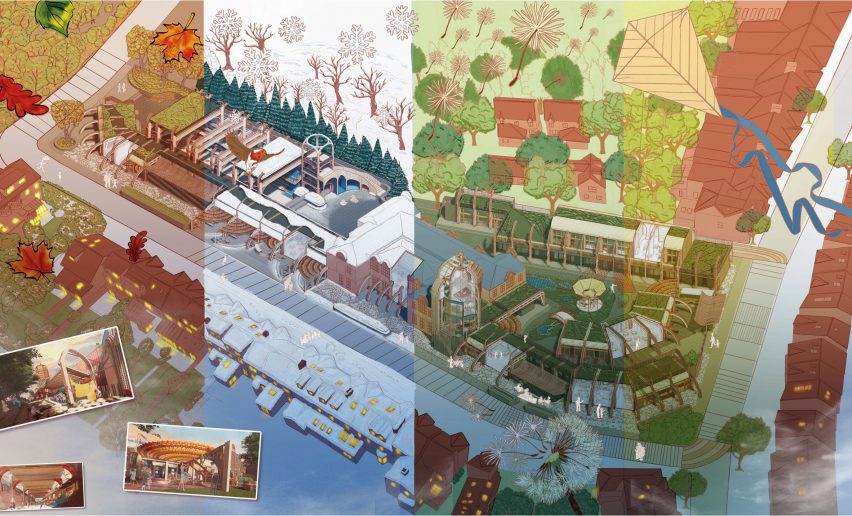
Timber Tinkerland School by Reem Taha Hajj Ahmad
"This project focuses on creating a timber tinker-land school that nurtures friendship and creativity through architecture.
"The school aims to provide a unique learning experience by encouraging children to engage in hands-on activities such as tinkering, sewing and painting.
"It emphasises the design of glulam columns and explores their adaptability to facilitate various forms of interactive play and engagement with the architectural structure.
"Complementary elements such as DIY-treated fabric and playful clamps are incorporated to enhance the design's flexibility and creativity.
"By fostering friendships through imaginative play and storytelling, the school aims to create an inspiring and nurturing environment for children and the surrounding community."
Student: Reem Taha Hajj Ahmad Course: Architecture MArch Tutors: Izaskun Chinchilla Moreno and Daniel Ovalle Costal
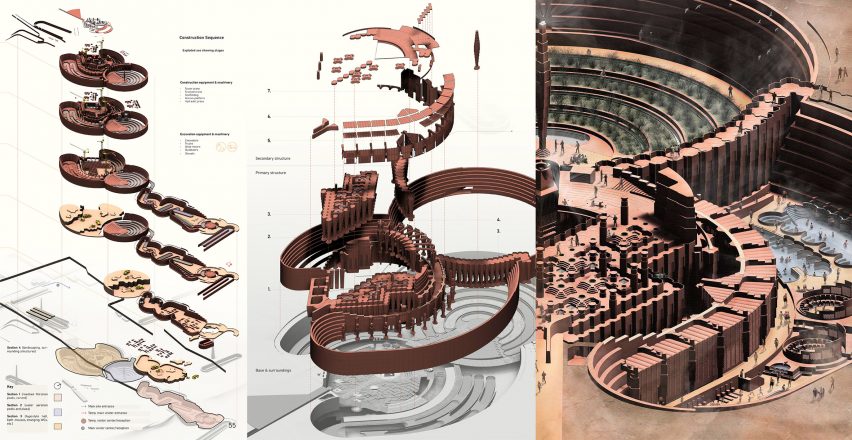
The Obelisk, The Aqua and The Repository by Momchil Petrinski
"The project is a civic centre located in the Helwan Industrial Area, Cairo, Egypt. It explores the themes of contextual disturbance as water source pollution, disruptive structures, harsh climatic conditions and an exploitative brick production industry.
"The centre responds to these conditions in a number of ways. This includes terraforming the desert landscape and providing sustainable water filtration, a holistic approach to local brick workers by hydro-healing in a bathhouse (the Aqua), congregation around artefacts (the Obelisk), and multidisciplinary learning and exchange between brick workers, stakeholders and Fairtrade Foundation in a reimagined hypostyle hall (the Repository)."
Student: Momchil Petrinski Course: Architecture MArch Tutors: Ricardo de Ostos and Isaie Bloch
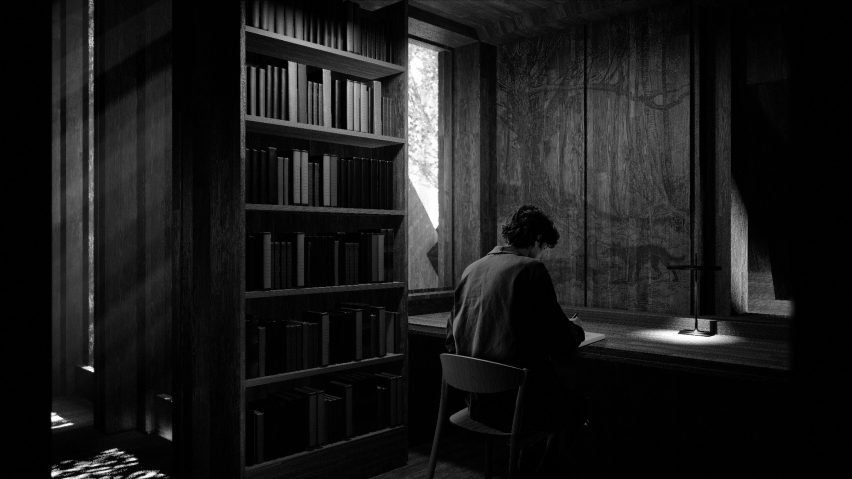
The Stories in the Shadows by Jatin Naru
"This project finds its inspiration in the bountiful pine wood and traditional timber houses of the Black Forest, entwined with timeless folktales.
"It serves as a literary outpost for a nearby university, paying homage to the Brothers Grimm and embracing the essence of Naturepoesie. Its spaces evoke both awe-inspiring grandeur and tranquil havens for literary introspection, capturing the spirit of the forest.
"Paying homage to a human tradition spanning millennia, the stories themselves are intricately carved into the architecture, creating an enduring archive upheld by devoted craftspeople.
"Thoughtfully positioned openings bathe the interior in forest light, unveiling the reliefs within the shadows, casting a captivating spell of storytelling and craftsmanship."
Student: Jatin Naru Course: Architecture BSc Tutors: Maria Fulford and Joerg Majer
Synthesising Earth by Phoebe Hampson
"The project delves into the journey of Paul Pignon, a prominent figure in Belgrade's electronic music scene during the 1980s.
"Returning to the city, he endeavours to spread his experimental and liberal ethos, providing an outlet for Yugo-nostalgia through unconventional music-making methods and underground events.
"The building evolves in three stages: Pignon establishes an independent radio station in an abandoned warehouse, fostering a community of musical artists and culminating in a vibrant summer festival.
"Embracing a synthesizer ideology, the architecture employs rammed-earth construction and curated aggregates to craft spaces with diverse acoustic properties, harmonising materiality and music."
Student: Phoebe Hampson Course: Architecture BSc Tutors: David Di Duca and Tetsuro Nagata

Convoy's Wharf Colour Factory and Learning Centre by Pasathorn Srichaiyongphanich
"The Convoys Wharf project in Lewisham, London, seeks to preserve the historic 19th-century cast iron structures, integrating a secondary timber enclosure that pays homage to shipbuilding.
"It includes artist studios, a learning centre and an indigo farm producing paint. Referencing traditional craftsmanship and historic pigment production, the project challenges future development plans, creating an experimental space for community engagement.
'Residents are invited to actively shape the future of their community through this innovative initiative."
Student: Pasathorn Srichaiyongphanich Course: Architecture BSc Tutors: Katerina Dionysopoulou and Billy Mavropoulos
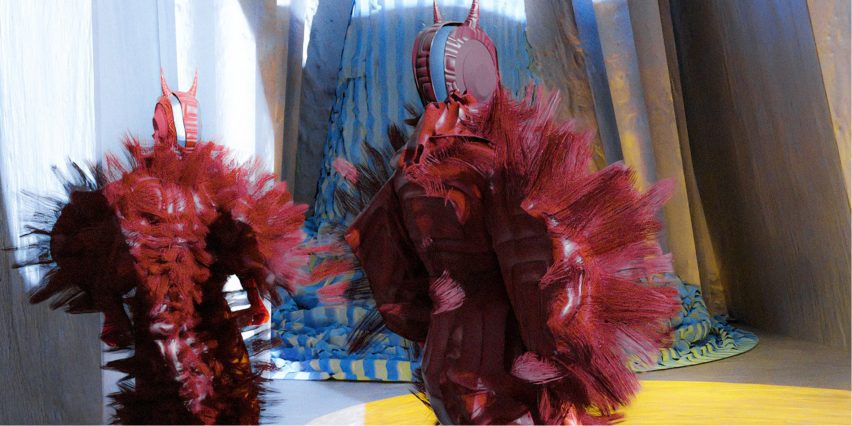
Anansi and the Reincarnation of Achilles Street Estate by Tabatha Crook
"This design research investigation examines folklore, religion and fiction as a reaction to the pragmatic, uninventive strategies currently applied to London's social housing estates.
"In a city that prioritises profit, estate strategies focus on adding as many units as possible while neglecting the broader needs of those reliant on housing support.
"By using fiction to discuss social housing more positively and laterally, a different conversation is created about improved living conditions, emotional intelligence, intercultural understanding and personal narratives.
"As illustration, a storybook/animation mixes 'new' and 'old' in Lewisham's Achilles Street Estate within the traditional folklores of its residents."
Student: Tabatha Crook Course: Architecture MSci Tutor: Murray Fraser and Farlie Reynolds
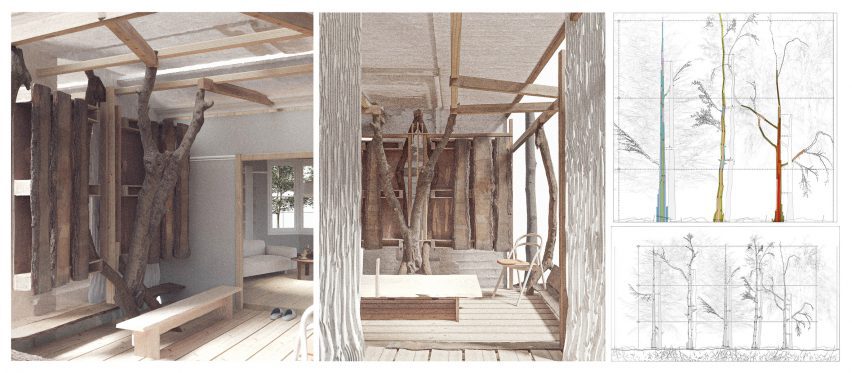
The Woodland Street Manifesto by Toby Prest
"This design research investigation examines the role of the tree in London, critiquing current planting and maintenance strategies to propose productive urban forestry that benefits the city both ecologically and materially.
"How can London's street trees be enhanced to create a sustainable source of timber which also empowers local communities?
"The focus is on the journey from sapling through to a building material as a process that helps to reintroduce London-based local resource systems and specialised architectural forms.
"Accompanying aims are to mitigate the inequity of street trees between wealthier and poorer districts, and to cut house construction costs."
Student: Toby Prest Course: Architecture MSci Tutors: Murray Fraser and Farlie Reynolds
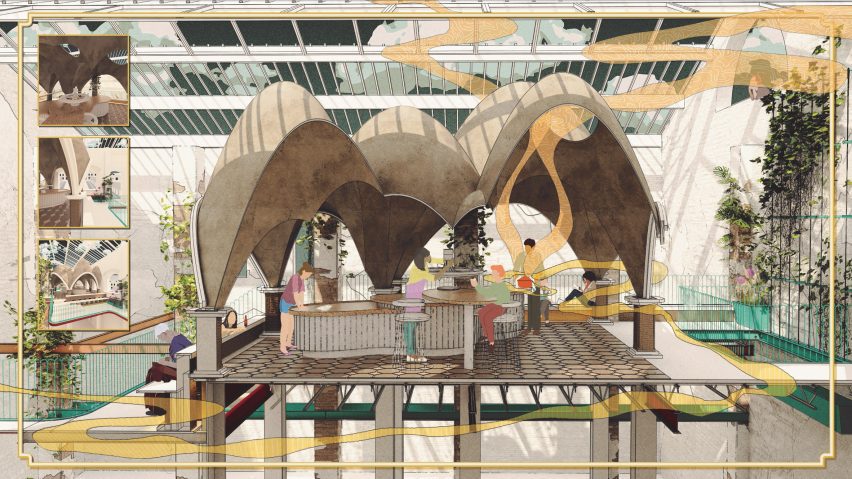
Crafting Domesticities for an Ecology of Care by Jessica Ho
"How can we navigate the necessity for denser urban habitation with a culturally and socially responsible approach towards heritage?
"The project aims to deconstruct the notion of dwelling as a set of commodified, unitised parcels of bedroom, living room, etcetera, and to instead propose a flexible domesticity based on a granular approach to rituals of care.
"This is explored with the overarching theme of promoting shared cultural and artistic expression, fostering wellbeing across communities and an appreciation of the local heritage."
Student: Jessica Ho Course: Engineering and Architectural Design MEng Tutors: Yasemin Didem Aktas, Yair Schwartz and Daniel Ovalle Costal
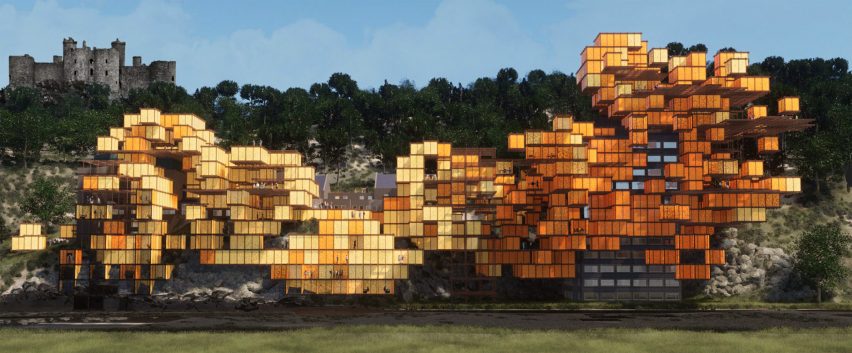
AI Pixel Parasite by Andreea Dumitrescu
"Located on the former site of Coleg Harlech in North Wales, this proposal is an AI research lab and data centre, contrasting and complimenting the existing structures.
"It explores how artificial intelligence can be used collaboratively to design a building that builds itself, learning from its surroundings and itself to continuously adapt and improve.
"The building is composed of modular cubes, placed and organised through machine learning algorithms to optimise environmental impacts and conditions.
"Powered by a nuclear battery developed by ANPEG, its dynamic growth evolves to meet the progressing demands of the data centre in an intelligent and adaptable framework."
Student: Andreea Dumitrescu Course: Engineering and Architectural Design MEng Tutors: Luke Olsen, Filip Kirazov, Aurore Julien and Matthew Heywood, in collaboration with ANPEG

Mourning in Bytes: Cyberpilgrims in a Hypothetical Hellscape by Daniel McCarthy
"'Mourning in Bytes: CyberPilgrims in a Hypothetical Hellscape' explores the profound emotional significance of virtual connections within online fandoms.
"By examining parasocial relationships and the impermanence of idolised figures, the project delves into the experiences of loss and grief in these virtual communities.
"It sheds light on the interplay between fan perceptions and the constructed mythology surrounding bands, investigating the idolization process and the creation of god-like narratives by fans.
"The culmination of the project is the construction of a virtual pilgrimage, providing devoted fans with a memorial space and an immersive experience that subtly confronts the ephemeral nature of idolised figures."
Student: Daniel McCarthy Course: Architectural and Interdisciplinary Studies BSc Tutors: Freddy Tuppen and Kevin Green

X-RAY – The Embodied City – Whitechapel, London by Architecture BSc Year 1 Students
"The main building project of the year was X-RAY – The Embodied City, sited in Whitechapel around the Royal London Hospital.
"This project investigated how the design of buildings can nurture health and well-being. Students considered elements of architecture that might encompass medical and non-medical practices, and practised alternative and lateral thinking to address some of the bizarre, mystical, profane and spiritual aspects of health.
"Students stepped into the shoes of the architect-surgeon, in order to learn to 'diagnose the city' by examining selected sites and surrounding environments."
Student: Architecture BSc Year 1 Students Course: Architecture BSc Tutors: Year 1 Design Team Tutors
Partnership content
This school show is a partnership between Dezeen and Bartlett School of Architecture. Find out more about Dezeen partnership content here .
- Student projects
- The Bartlett School of Architecture
- School Shows
Subscribe to our newsletters
Our most popular newsletter, formerly known as Dezeen Weekly. Sent every Thursday and featuring a selection of the best reader comments and most talked-about stories. Plus occasional updates on Dezeen’s services and invitations to Dezeen events.
Sent every Tuesday and containing a selection of the most important news highlights. Plus occasional updates on Dezeen’s services and invitations to Dezeen events.
A daily newsletter containing the latest stories from Dezeen.
Daily updates on the latest design and architecture vacancies advertised on Dezeen Jobs. Plus occasional news.
Weekly updates on the latest design and architecture vacancies advertised on Dezeen Jobs. Plus occasional news.
News about our Dezeen Awards programme, including entry deadlines and announcements. Plus occasional updates.
News from Dezeen Events Guide, a listings guide covering the leading design-related events taking place around the world. Plus occasional updates and invitations to Dezeen events.
News about our Dezeen Awards China programme, including entry deadlines and announcements. Plus occasional updates.
We will only use your email address to send you the newsletters you have requested. We will never give your details to anyone else without your consent. You can unsubscribe at any time by clicking on the unsubscribe link at the bottom of every email, or by emailing us at [email protected] .
For more details, please see our privacy notice .
You will shortly receive a welcome email so please check your inbox.
You can unsubscribe at any time by clicking the link at the bottom of every newsletter.
MA & PhD in Architecture
Ucla architecture and urban design offers two academic graduate degrees: the master of arts in architecture (ma) and doctor of philosophy in architecture (phd)..
The programs produce students whose scholarship aims to provoke and operate within architecture’s public, professional, and scholarly constituencies. Both programs are supported by the Standing Committee, made up of five faculty members: Michael Osman (interim program director), Cristóbal Amunátegui , Dana Cuff , Samaa Elimam , and Ayala Levin . A number of visiting faculty teach courses to expand the range of offerings.
Applications for the MA/PhD program (Fall 2024 matriculation) are completed via the UCLA Application for Graduate Admission , and are due January 6, 2024. Candidates will be notified of decisions in March 2024; admitted candidates who wish to accept the offer of matriculation must submit their Statement of Intent to Register (SIR) by April 15, 2024.
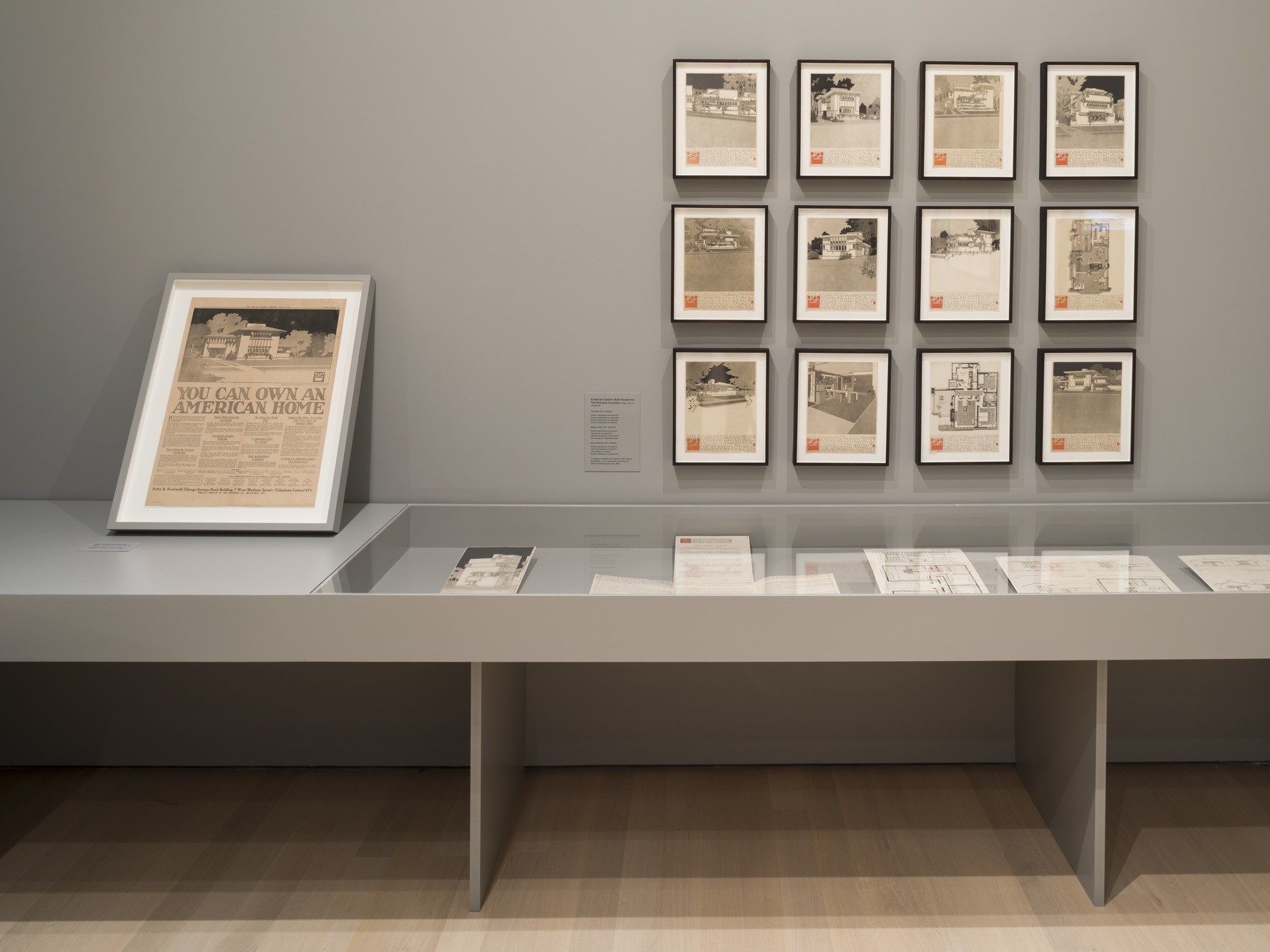
All MA and PhD students are required to enroll in a two-year colloquium focused on methods for writing, teaching, and researching in the field of architecture. The six courses that constitute the colloquium train students in the apparatus of academic scholarship. Over the two-year sequence, students produce original research projects and develop skills in long-format writing.
Research Opportunities
The intellectual life of the students in the MA and PhD programs are reinforced by the increasing number of opportunities afforded to students through specialized faculty-led research projects. These include cityLAB-UCLA and the Urban Humanities Institute .
MA in Architecture
This program prepares students to work in a variety of intellectual and programmatic milieus including historical research, cultural studies, and interdisciplinary studies with particular emphasis on connections with geography, design, art history, history of science and literary studies, as well as studio and design based research.
Beyond the core colloquium, MA students take a series of approved courses both at UCLA AUD and across campus. The MA program is a two-year degree, culminating in a thesis. The thesis is developed from a paper written by the student in their coursework and developed in consultation with the primary advisor and the standing committee. In addition to courses and individual research, students often participate in collective, project-based activities, including publications, symposia and exhibitions.
The program is distinguished by its engagement with contemporary design and historical techniques as well by the unusual balance it offers: fostering great independence and freedom in the students’ courses of study while providing fundamental training in architectural scholarship.
Recent MA Theses
- Jacqueline Meyer, “Crafting Utopia: Paolo Soleri and the Building of Arcosanti.”
- Joseph Maguid, “The Architecture of the Videogame: Architecture as the Link Between Representational and Participatory Immersion.”
- Meltem Al, “The Agency of Words and Images in the Transformation of Istanbul: The Case of Ayazma.”
- Courtney Coffman, “Addressing Architecture and Fashion: On Simulacrum, Time and Poché.”
- Joseph Ebert, “Prolegomena to a Poiesis of Architectural Phenomenology.”
- Jamie Aron, “Women Images: From the Bauhaus Weaving Workshop to the Knoll Textile Division.”
- Gustave Heully, “Moldy Assumptions.”
- Brigid McManama, “Interventions on Pacoima Wash: Repurposing Linear Infrastructure into Park Spaces.”
MA Typical Study Program
| FALL | ||
|---|---|---|
| 290 | Colloquium | (-) |
| 000 | Elective in Critical Studies | (-) |
| 000 | General Elective | (-) |
| WINTER | ||
|---|---|---|
| 290 | Colloquium | (-) |
| 000 | Elective in Critical Studies | (-) |
| 000 | General Elective | (-) |
| SPRING | ||
|---|---|---|
| 290 | Colloquium | (-) |
| 000 | Elective in Critical Studies | (-) |
| 000 | General Elective | (-) |
PhD in Architecture
This program prepares students to enter the academic professions, either in architectural history, architectural design, or other allied fields. PhD students are trained to teach courses in the history and theory of architecture while also engaging in studio pedagogy and curatorial work. In addition to the colloquium, PhD students take a series of approved courses both at UCLA Architecture and Urban Design and across campus. They select these courses in relation to their own research interests and in consultation with their primary advisor. The priorities for selection are breadth of knowledge and interdisciplinary experience that retains a focused area of expertise. To this end, the students identify Major and Minor Fields of study. The Minor Field is generally fulfilled by satisfactorily completing three courses given by another department and the Major Field by five courses offered by UCLA Architecture and Urban Design.
Once coursework is completed, PhD students move to the Comprehensive Exam, Qualifying Exam, and the writing of a dissertation, and final defense, if deemed appropriate by the doctoral committee. In the transition from coursework to exams, PhD students work on one paper beyond its original submission as coursework. The paper begins in the context of a departmental seminar, but often continues either in the context of an independent study, summer mentorship, or a second seminar with faculty consent. Upon the research paper’s acceptance, students begin preparing for their comprehensive exam. Before their third year, students must also satisfactorily complete three quarters of language study or its equivalent according to University standards. The particular language will be determined in consultation with the Standing Committee. The Comprehensive Exam is administered by at least two members of the Standing Committee and at most one faculty member from another Department at UCLA, also a member of the Academic Senate.
The Comprehensive Exam tests two fields: the first covers a breadth of historical knowledge—300 years at minimum—and the second focuses on in-depth knowledge of a specialization that is historically and thematically circumscribed. Students submit an abstract on each of these fields, provide a substantial bibliography, and prepare additional documentation requested by their primary advisor. These materials are submitted to the committee no less than two weeks before the exam, which occurs as early as the end of the second year. Students are encouraged to complete the Comprehensive Exam no later than the end of their third year of study.
The Comprehensive Exam itself consists of two parts: an oral component that takes place first, and then a written component. The oral component is comprised of questions posed by the committee based on the student’s submitted materials. The goal of the exam is for students to demonstrate their comprehensive knowledge of their chosen field. The written component of the exam (which may or may not be waived by the committee) consists of a written response to a choice of questions posed by the committee. The goal of this portion of the exam is for students to demonstrate their research skills, their ability to develop and substantiate an argument, and to show promise of original contribution to the field. Students have two weeks to write the exam. After the committee has read the exam, the advisor notifies the student of the committee’s decision. Upon the student’s successful completion of the Comprehensive Exam, they continue to the Qualifying Exam.
Students are expected to take the Qualifying Exam before the beginning of the fourth year. The exam focuses on a dissertation prospectus that a student develops with their primary advisor and in consultation with their PhD committee. Each student’s PhD committee consists of at least two members of the Standing Committee and one outside member from another department at the University (and a member of the Faculty Senate). Committees can also include faculty from another institution. All committees are comprised of at least three members of UCLA Academic Senate. The prospectus includes an argument with broad implications, demonstrates that the dissertation will make a contribution of knowledge and ideas to the field, demonstrates mastery of existing literature and discourses, and includes a plan and schedule for completion.
The PhD dissertation is written after the student passes the qualifying exam, at which point the student has entered PhD candidacy. The dissertation is defended around the sixth year of study. Students graduating from the program have taken posts in a wide range of universities, both in the United States and internationally.
Recent PhD Dissertations
- Marko Icev, "Building Solidarity: Architecture After Disaster and The Skopje 1963 Post-Earthquake Reconstruction." ( Read )
- Anas Alomaim, "Nation Building in Kuwait, 1961-1991."
- Tulay Atak, “Byzantine Modern: Displacements of Modernism in Istanbul.”
- Ewan Branda, “Virtual Machines: Culture, telematique, and the architecture of information at Centre Beaubourg, 1968–1977.”
- Aaron Cayer, "Design and Profit: Architectural Practice in the Age of Accumulation"
- Per-Johan Dahl, “Code Manipulation, Architecture In-Between Universal and Specific Urban Spaces.”
- Penelope Dean, “Delivery without Discipline: Architecture in the Age of Design.”
- Miriam Engler, “Gordon Cullen and the ‘Cut-and-Paste’ Urban Landscape.”
- Dora Epstein-Jones, “Architecture on the Move: Modernism and Mobility in the Postwar.”
- Sergio Figueiredo, “The Nai Effect: Museological Institutions and the Construction of Architectural Discourse.”
- Jose Gamez, “Contested Terrains: Space, Place, and Identity in Postcolonial Los Angeles.”
- Todd Gannon, “Dissipations, Accumulations, and Intermediations: Architecture, Media and the Archigrams, 1961–1974.”
- Whitney Moon, "The Architectural Happening: Diller and Scofidio, 1979-89"
- Eran Neuman, “Oblique Discourses: Claude Parent and Paul Virilio’s Oblique Function Theory and Postwar Architectural Modernity.”
- Alexander Ortenberg, “Drawing Practices: The Art and Craft of Architectural Representation.”
- Brian Sahotsky, "The Roman Construction Process: Building the Basilica of Maxentius"
- Marie Saldana, “A Procedural Reconstruction of the Urban Topography of Magnesia on The Maeander.”
- David Salomon, “One Thing or Another: The World Trade Center and the Implosion of Modernism.”
- Ari Seligmann, “Architectural Publicity in the Age of Globalization.”
- Zheng Tan, “Conditions of The Hong Kong Section: Spatial History and Regulatory Environment of Vertically Integrated Developments.”
- Jon Yoder, “Sight Design: The Immersive Visuality of John Lautner.”
A Sampling of PhD Alumni and Their Pedagogy
Iman Ansari , Assistant Professor of Architecture, the Knowlton School, Ohio State University
Tulay Atak , Adjunct Associate Professor, Pratt School of Architecture
Shannon Starkey , Associate Professor of Architecture, University of San Diego
Ece Okay , Affiliate Research, Université De Pau Et Des Pays De L'adour
Zheng Tan , Department of Architecture, Tongji University
Pelin Yoncaci , Assistant Professor, Department Of Architecture, Middle East Technical University
José L.S. Gámez , Interim Dean, College of Arts + Architecture, UNC Charlotte
Eran Neuman , Professor, School of Architecture, Tel Aviv University
Marie Saldana , Assistant Professor, School of Interior Architecture, University of Tennessee - Knoxville
Sergio M. Figueiredo , Assistant Professor, Eindhoven University of Technology
Rebecca Choi , Assistant Professor of Architecture History, School of Architecture, Tulane University
Will Davis , Lecturer in History, Theory and Criticism, Department of Architecture, National University of Singapore
Maura Lucking , Faculty, School of Architecture & Urban Planning, University of Wisconsin - Milwaukee
Kyle Stover , Assistant Professor, School of Architecture, Montana State University
Alex Maymind , Assistant Professor of Architecture and Director of Undergraduate Studies in Architecture, University of Minnesota
Gary Riichirō Fox , visiting faculty member at Southern California Institute of Architecture (SCI-Arc) and lecturer at USC School of Architecture
Randy Nakamura , Adjunct Professor, College of Arts and Sciences, University of San Francisco
Aaron Cayer , Assistant Professor of Architecture History, School of Architecture + Planning, University of New Mexico
Whitney Moon , Associate Professor of Architecture, School of Architecture & Urban Planning, University of Wisconsin - Milwaukee
Todd Gannon , Professor of Architecture, the Knowlton School, Ohio State University
Dora Epstein Jones , Professor of Practice, School of Architecture, the University of Texas at Austin
Sarah Hearne , Assistant Professor, College of Architecture and Planning, University of Colorado Denver
PhD Typical Study Program
| FALL | ||
|---|---|---|
| 290 | Colloquium | (-) |
| 000 | Elective in Critical Studies | (-) |
| 000 | General Elective/Language* | (-) |
| WINTER | ||
|---|---|---|
| 290 | Colloquium | (-) |
| 000 | Elective in Critical Studies | (-) |
| 000 | General Elective/Language* | (-) |
| SPRING | ||
|---|---|---|
| 290 | Colloquium | (-) |
| 000 | Elective in Critical Studies | (-) |
| 000 | Thesis/Language* | (-) |
*The choice of language to fulfill this requirement must be discussed with the Ph.D. Standing Committee
| FALL | ||
|---|---|---|
| 597 | Preparation for Comprehensive Exam | (-) |
| WINTER | ||
|---|---|---|
| 597 | Preparation for Comprehensive Exam | (-) |
| SPRING | ||
|---|---|---|
| 597 | Preparation for Comprehensive Exam | (-) |
Our Current PhD Cohort
AUD's cohort of PhD candidates are leaders in their fields of study, deepening their scholarship at AUD and at UCLA while sharing their knowledge with the community.
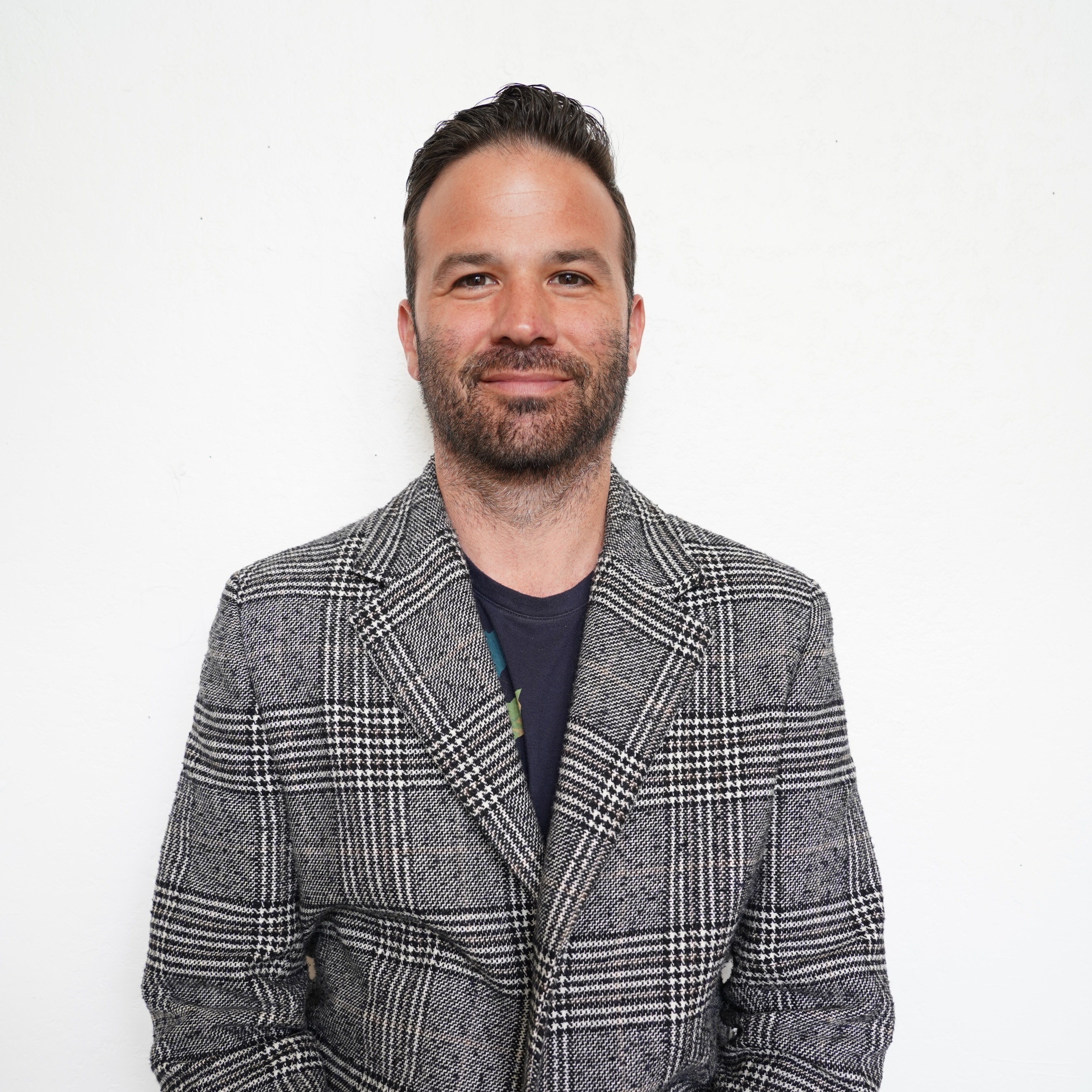
Adam Boggs is a sixth year Ph.D candidate and interdisciplinary artist, scholar, educator and Urban Humanist. His research and teaching interests include the tension between creativity and automation, craft-based epistemologies, and the social and material history of architecture at the U.S.-Mexico border. He holds a BFA in Sculpture Cum Laude from the Ohio State University, and an MFA in Visual Art from the State University of New York at Purchase College. Prior to joining the doctoral program at UCLA he participated in courses in Architecture (studio and history) at Princeton University and Cornell University. His dissertation analyzes the history of indigenous labor during the Mexican baroque period to form a comparative analysis with the 20th century Spanish revival architecture movement in Southern California and how the implementation of the style along the U.S.-Mexico border might function as a Lefebvrian “thirdspace” that disrupts binary thinking. In Spring 2024 he will teach an undergraduate seminar course at AUD on the history of architecture at the U.S.-Mexico border as part of the CUTF program.

Hanyu Chen is a second-year doctoral student at UCLA AUD. Her research focuses on the intersection between (sub)urban studies, heritage conservation, and the genders of the space. Specifically, it concerns the dynamics of genders in (sub)urban areas and how these dynamics are conserved as heritage. Born and raised in China for her first 18 years, Hanyu chose the conservation of comfort stations in China as her master's thesis at the University of Southern California, where she earned her master’s degree in Heritage Conservation and officially started her journey in architecture. Her thesis discusses the fluidity and genders of comfort stations and how they survive in contemporary China’s heritage conservation policies.
Hanyu also holds a Bachelor of Science degree in AMS (Applied Mathematics and Statistics) and Art History from Stony Brook University.
Yixuan Chen

Yixuan Chen is an architectural designer and a first-year doctoral student in the Department of Architecture and Urban Design at UCLA. Driven by an impulse to demystify both the grand promises and trivial familiarities of architecture, her research embarks on the notion of everydayness to elucidate the power dynamics it reveals. She investigates the conflicts between these two ends and focuses on modernization across different times and places.
Prior to joining UCLA AUD, she was trained as an architect and graduated from the University of Nottingham's China Campus with a first-class honors degree. Her graduation project “Local Culture Preservation Centre,” which questioned the validity of monumental architecture in the climate crisis, was nominated for the RIBA President's Medal in 2016.
She also holds a Master of Arts degree with distinction in Architectural History from the Bartlett School of Architecture, University College London. Her dissertation, “Shijing, on the Debris of Shijing,” explores the vanishing shijing places, or urban villages, where rural migrant workers negotiate their urban identity in Chinese cities, revealing shifting power relations. Additionally, she authored an article in Prospectives Journal titled "Architectural Authorship in ‘the Last Mile,’" advocating for a change to relational architectural authorship in response to the digital revolution in architecture.
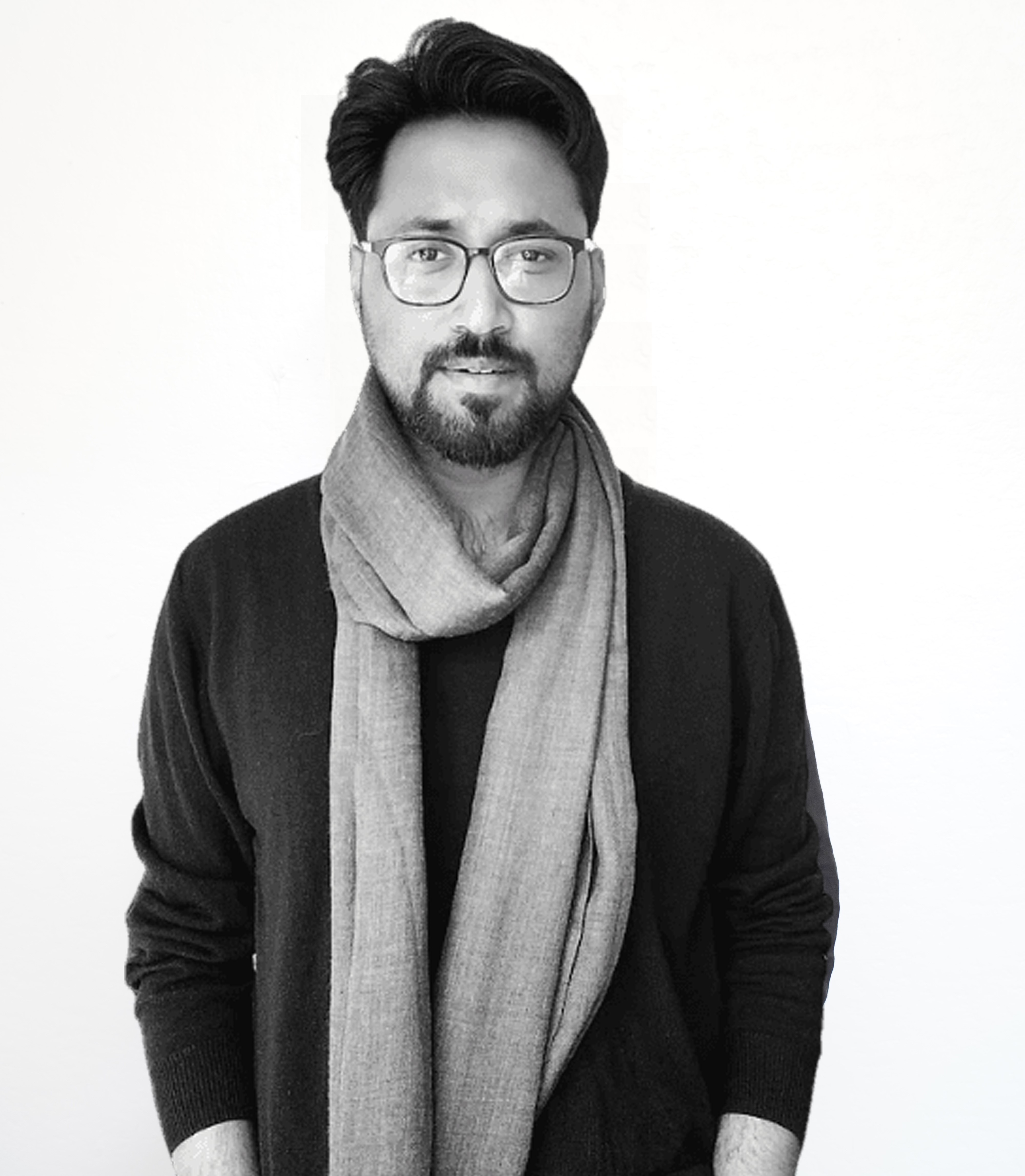
Pritam Dey is an urban designer and second-year doctoral student at UCLA AUD. His research interest lies at the intersection of colonial urbanism, sensorial history, and somatic inquiries. His architecture thesis investigated the crematorium and temple as sensorial infrastructure, and was presented at World Architecture Congress at Seoul in 2017. Previously Dey worked in the domain of urban design, specifically informal markets, as a shaper of urbanism in Indian cities. Prior to joining the AUD doctoral program, his past research focused on investigating the role of informal and wholesale markets in shaping up urbanity in the Indian city cores and co-mentored workshops on Urbanity of Chitpur Road, Kolkata with ENSAPLV, Paris which was both exhibited at Kolkata and Paris. He also co-mentored the documentation of the retrospective landscape of Hampi with the support of ENSAPLV and French Embassy. His investigations on the slums of Dharavi title ‘The tabooed city’ was published in the McGill University GLSA Research series 2021 under the theme: the city an object or subject of law?
An urban designer and architect, Pritam Dey pursued his post graduation from School of planning and Architecture, Delhi. During his academic tenure at SPA, he was the recipient of 2018 Design Innovation Center Fellowship for Habitat design allowing him to work on the social infrastructure for less catered communities in the Sub Himalayan Villages. In 2022 He mentored a series of exhibitions on the theme of Water, Mountains and Bodies at Ahmadabad.
He was the 2022-23 Urban Humanities Initiatives Fellow at UCLA and recipient of 2023 UCLA Center for India and South Asia fellowship for his summer research.
Carrie Gammell

Carrie Gammell is a doctoral candidate working at the intersection of architectural history, property law, and political economy. Her research focuses on claims, investments, and intermediary organizations in the United States, from the Homestead Act of 1862 to the Housing Act of 1934.
Carrie is also a Senior Research Associate at cityLAB UCLA, where she studies state appropriations for California community college student housing. In the past, she contributed to Education Workforce Housing in California: Developing the 21st Century Campus, a report and companion handbook that provides a comprehensive overview of the potential for land owned by school districts to be designed and developed for teachers and other employees.
Prior to joining AUD, Carrie worked as an architectural designer in Colombia and the United States, where she built a portfolio of affordable housing, multi-family residential, and single-family residential projects as well as civic and cultural renovations and additions. She holds a Bachelor of Architecture from Rice University and a Master in Design Studies (Critical Conservation) from the Harvard Graduate School of Design.
Anirudh Gurumoorthy
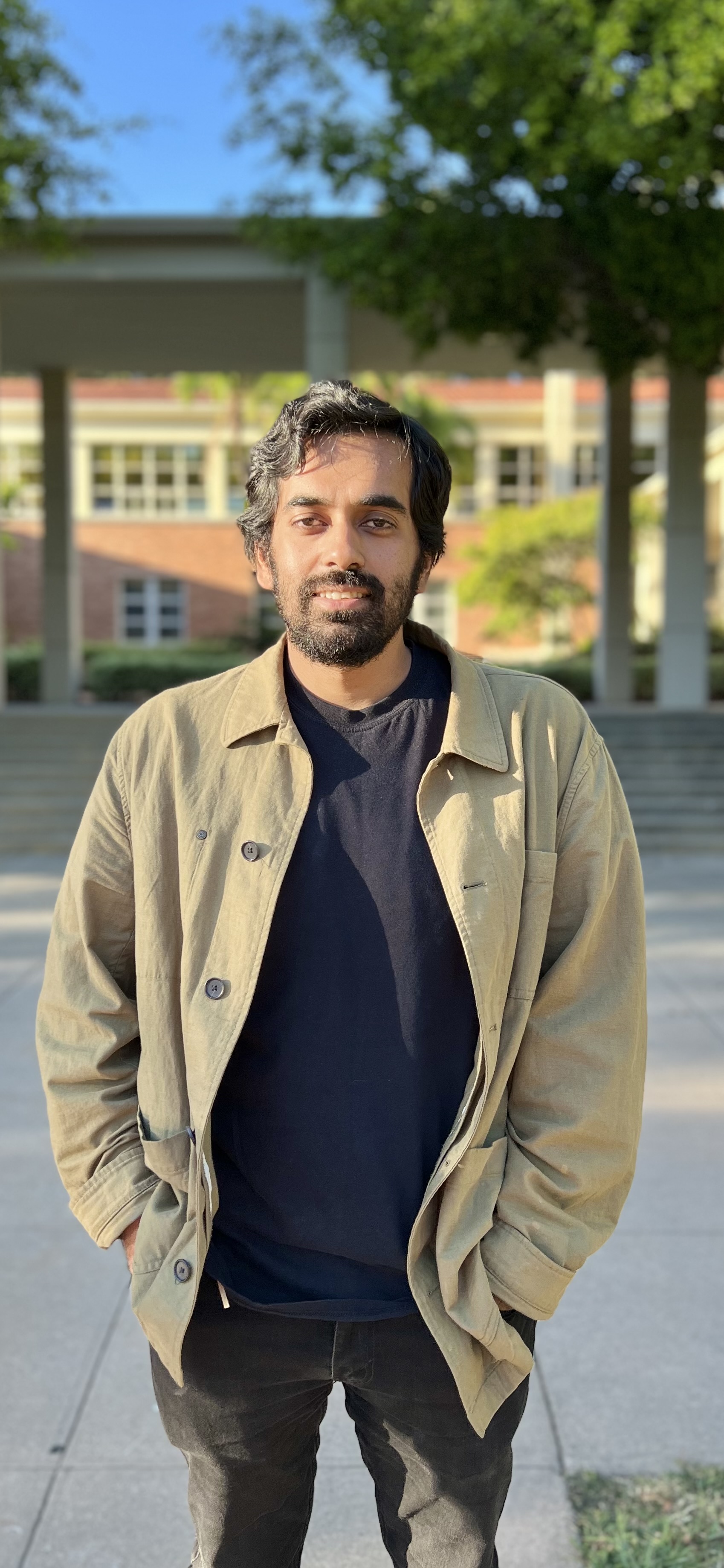
Anirudh Gurumoorthy is a PhD candidate at UCLA AUD. His dissertation, tentatively titled (Un)Certain Tropics and the Architecture of Certain Commodities, 1803-1926, focuses on the spatial and environmental histories of natural history/sciences in the long-nineteenth century as it related to the political economy of empire within South Asia. He is interested in the ways the materiality of commodity extraction and production contends with how, where, and why certain ‘tropical’ animals, vegetables, and minerals are attributed with a metropolitan sense of ‘value’. Moving from the United States to Britain (and back) through various parts of the Indian Ocean world as markets for singular forms of ice, rubber, and cattle form, peak, and collapse, the dissertation ultimately aims to reveal interconnected spatial settings of knowledge, control, regulation, display, and labor where knowledge systems, technical limits, human and nonhuman action/inaction, differentiated senses of environments and value continually contend with each other to uphold the fetishes of the world market. Gurumoorthy holds a B.Arch. from R.V. College of Architecture, Bangalore, and an M.Des in the History and Philosophy of Design and Media from the Harvard Graduate School of Design.
Chi-Chia Hou
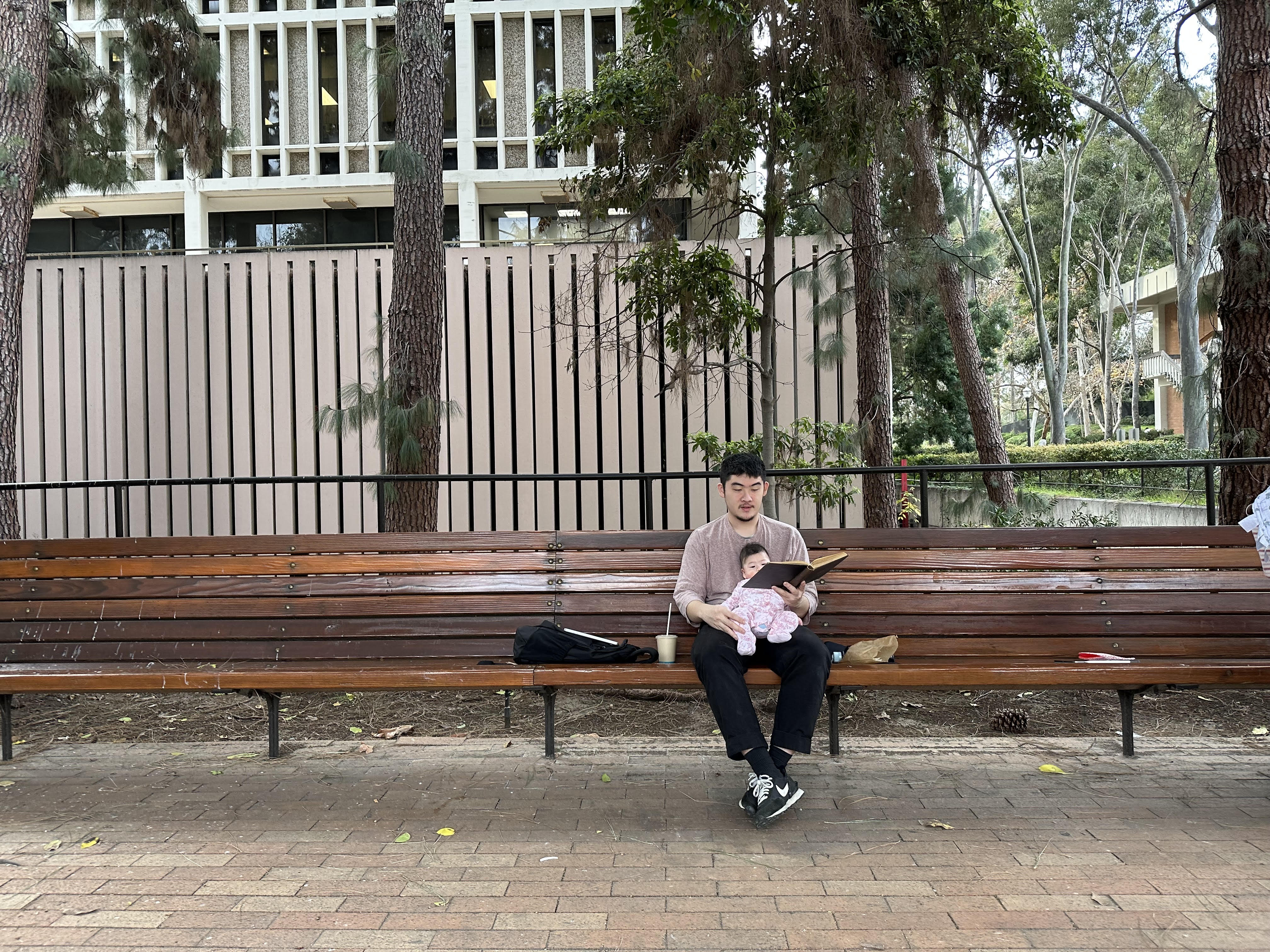
Chi-Chia Hou is a doctoral candidate in his sixth year at UCLA AUD. His working dissertation, “New Frontier: Architecture and Service 1893-1960,” explores his interest in architecture and wealth, changing ideas of profit and management, and social scientific discourses for measuring work and worker, self and others, and values of landed property.
His research locates moments of theorizing methodologies to manage income-generating properties in schools of agriculture, home economics, and hotel studies. The schools taught their students theories, while instilling the imminence of faithful direction of oneself, of self-as-property. The pedagogies, existing beyond the purview of Architecture, were of immense architectural consideration.
Chi-Chia Hou took a break from school in the previous academic year to learn from his daughter and has now returned to school to learn from his brilliant cohorts.
Adam Lubitz

Adam Lubitz is an urban planner, heritage conservationist, and doctoral student. His research engages the intersection of critical heritage studies and migration studies, with an emphasis on how archival information can inform reparations. His community-based research has been most recently supported by the Columbia GSAPP Incubator Prize as well as the Ziman Center for Real Estate and Leve Center for Jewish Studies at UCLA.
Prior to joining AUD, Adam worked at World Monuments Fund within their Jewish Heritage Program, and taught GIS coursework at Barnard College. His master's thesis applied field research with experimental mapping techniques in the old town of a municipality in Palestine. Adam holds MS degrees in Historic Preservation and Urban Planning from Columbia University and a BA in Urban Studies from New College of Florida.

José Monge is a PhD candidate in the Department of Architecture and Urban Design. His dissertation, titled Maritime Labor, Candles, and the Architecture of the Enlightenment (1750-1872) , focuses on the role that whale-originated illuminants, specifically spermaceti candles and oil, played in the American Enlightenment as an intellectual project and the U.S. as a country. By unravelling the tension between binaries such as intellectual and manual labor–the consumers that bought these commodities and the producers that were not able to afford them–the project understands architecture as a history of activities that moved from sea to land and land to sea, challenging assumptions about the static “nature” of architecture.
Kurt Pelzer

Kurt Pelzer is a fourth-year PhD candidate at UCLA AUD. Their research explores the relational histories, material flows, and politics of land in and beyond California in the long nineteenth century during the United States parks, public lands, and conservation movements.
Their current scholarship traces the settler possession and exhibitionary display of a Giant Sequoia (Sequoiadendron giganteum) in the 1850s; an act that contested the ways Miwok peoples ancestral to California's Sierra Nevada knew and related to life and land. Their broader interests include histories of colonialism and capitalism in the Americas, environmental history, and Blackness and Indigeneity as a methodological analytic for political solidarities and possibilities.
Prior to arriving at UCLA, Pelzer worked at the San Francisco Museum of Modern Art in the Architecture and Design Curatorial Department participating in exhibitions, programming, and collections work. Pelzer completed a Master of Advanced Architectural Design in the History, Theory, and Experiments program from California College of the Arts in San Francisco, and earned their Bachelor's degree in Landscape Architecture from the College of Design at Iowa State University.
Shota Vashakmadze
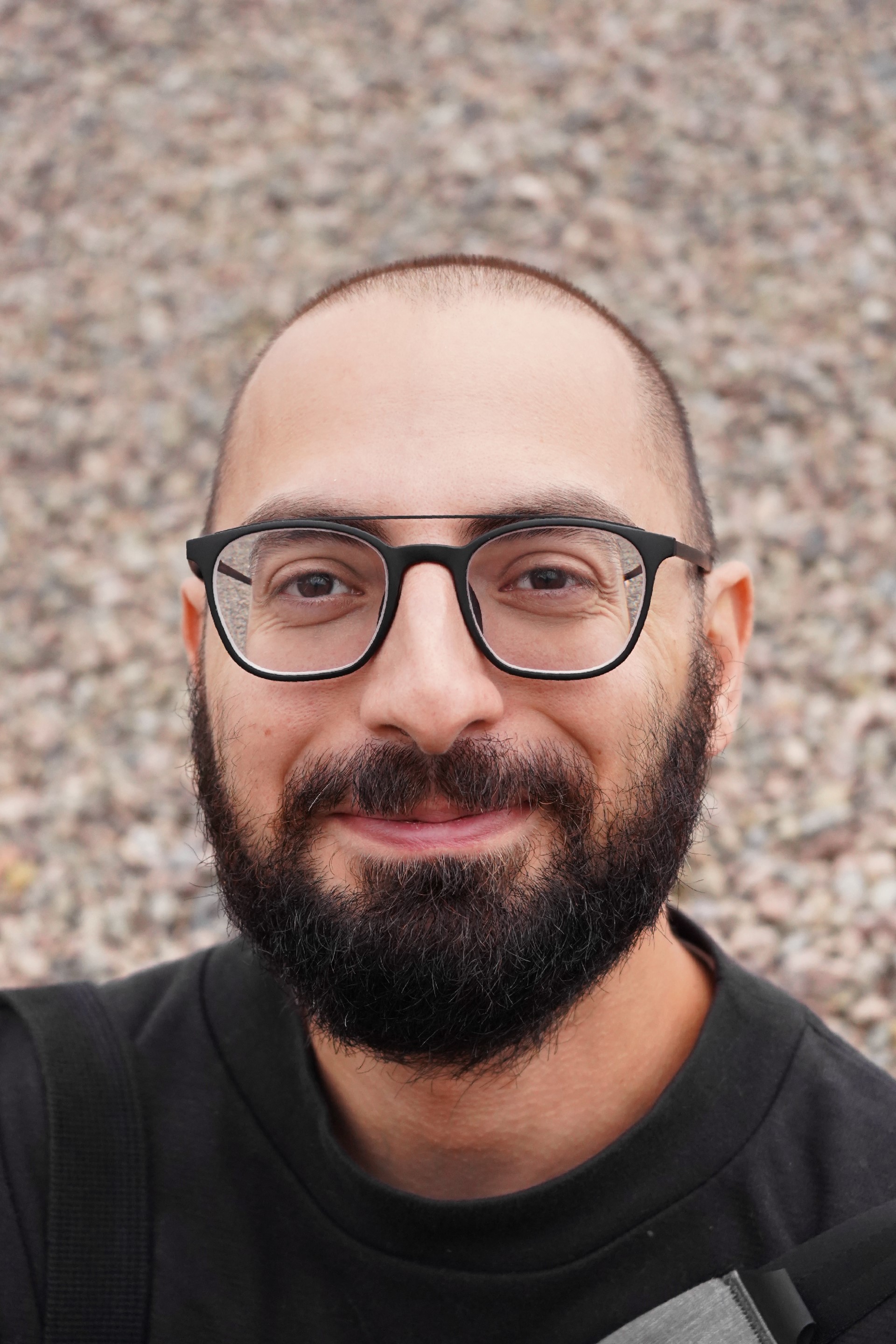
Email Shota Vashakmadze
Shota Vashakmadze is a sixth-year PhD candidate at UCLA AUD. His dissertation traces the conjoined histories of architectural computing, environmental design, and professional practice in the late 20th century, adopting critical approaches to architecture’s technical substrates—the algorithms, softwares, and user protocols of computation—to examine their social and political dispositions. In his scholarship and pedagogy, he aims to situate forms of architectural labor within the profession’s ongoing acculturation to environmental crisis. Most recently, he has been leading the development of the interdisciplinary “Building Climates” cluster, a year-long course sequence at UCLA, and co-organizing an initiative dedicated to fostering discourse on climate change and architecture, including a two-day conference entitled “Architecture After a Green New Deal.”
His research has been supported by the Canadian Centre for Architecture and appeared in journals including Architectural Theory Review , The Avery Review, and Pidgin Magazine. He is currently completing a contribution to a collection on landscape representation and a chapter for an edited volume on architecture, labor, and political economy.
Shota holds an MArch from Princeton University and has a professional background in architecture, landscape, and software development. Before coming to UCLA, he researched methods for designing with point cloud data and wrote Bison, a software plugin for landscape modeling.
Alexa Vaughn
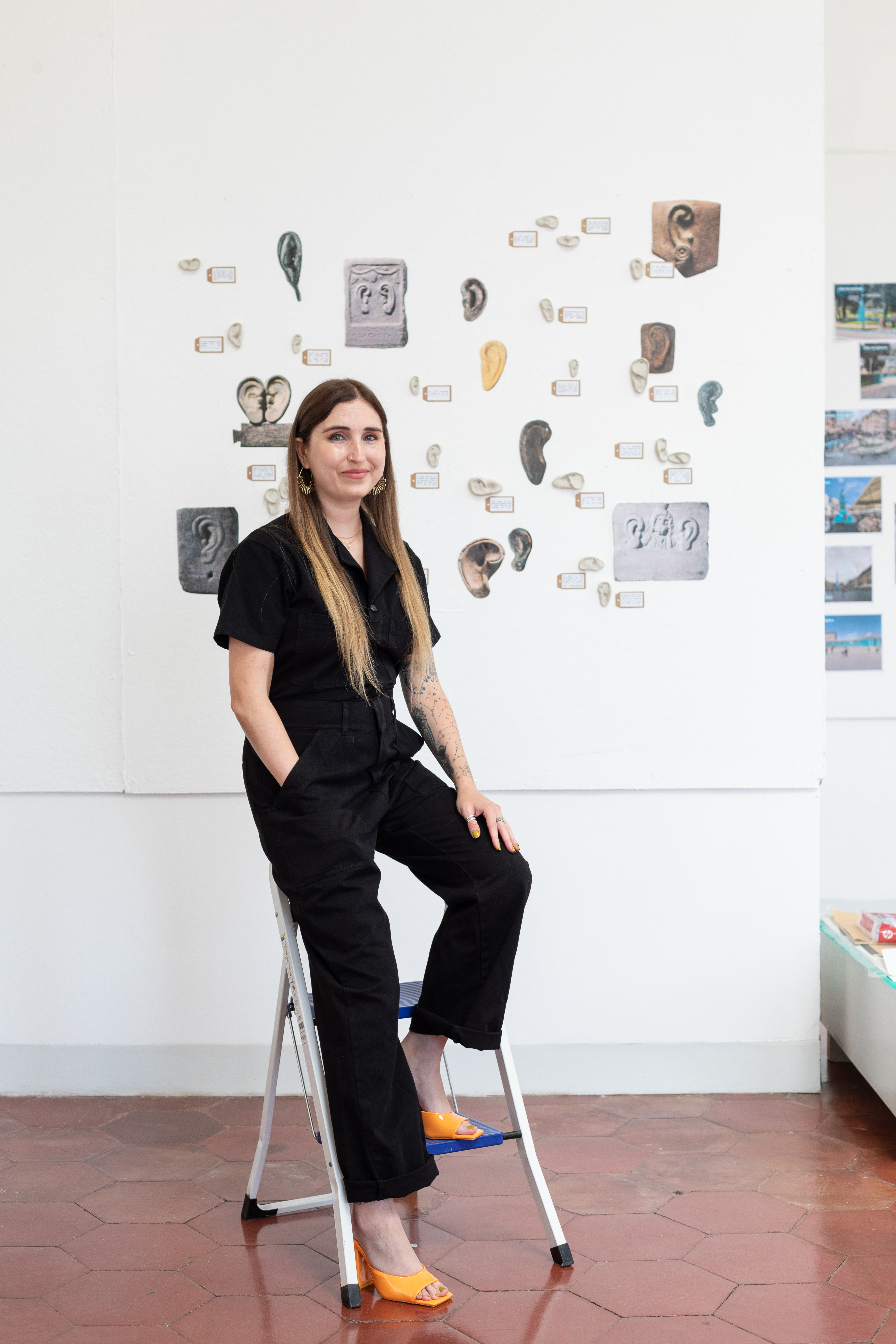
Alexa Vaughn (ASLA, FAAR) is a first year PhD student in Architecture + Urban Design and a Eugene V. Cota-Robles Fellow , from Long Beach, California. She is a Deaf landscape designer, accessibility specialist, consultant, and recent Fellow of the American Academy in Rome (2022-23). She is a visionary speaker, thought leader, prolific writer and researcher, and the author of “ DeafScape : Applying DeafSpace to Landscape,” which has been featured in numerous publications.
Her professional work is centered upon designing public landscapes with and for the Deaf and disabled communities, applying legal standards and Universal Design principles alongside lived experience and direct participation in the design process. She is an expert in designing landscapes for the Deaf community (DeafScape) and in facilitation of disabled community engagement. Prior to joining the A+UD program, Alexa worked for several landscape architecture firms over the course of six years, including OLIN and MIG, Inc.
Through a disability justice lens, her dissertation will seek to formally explore the historical exclusionary and inaccessible design of American urban landscapes and public spaces, as well as the response (activism, policy, and design) to this history through the present and speculative future. She will also actively take part in activist- and practice-based research with cityLAB and the Urban Humanities Institute .
Alexa holds both a BA in Landscape Architecture (with a minor in Conservation and Resource Studies) and a Master’s degree in Landscape Architecture (MLA) from the University of California, Berkeley, with specialization in accessible and inclusive design. Much of her work can be found at www.designwithdisabledpeoplenow.com and on Instagram: @DeafScape.
Yashada Wagle
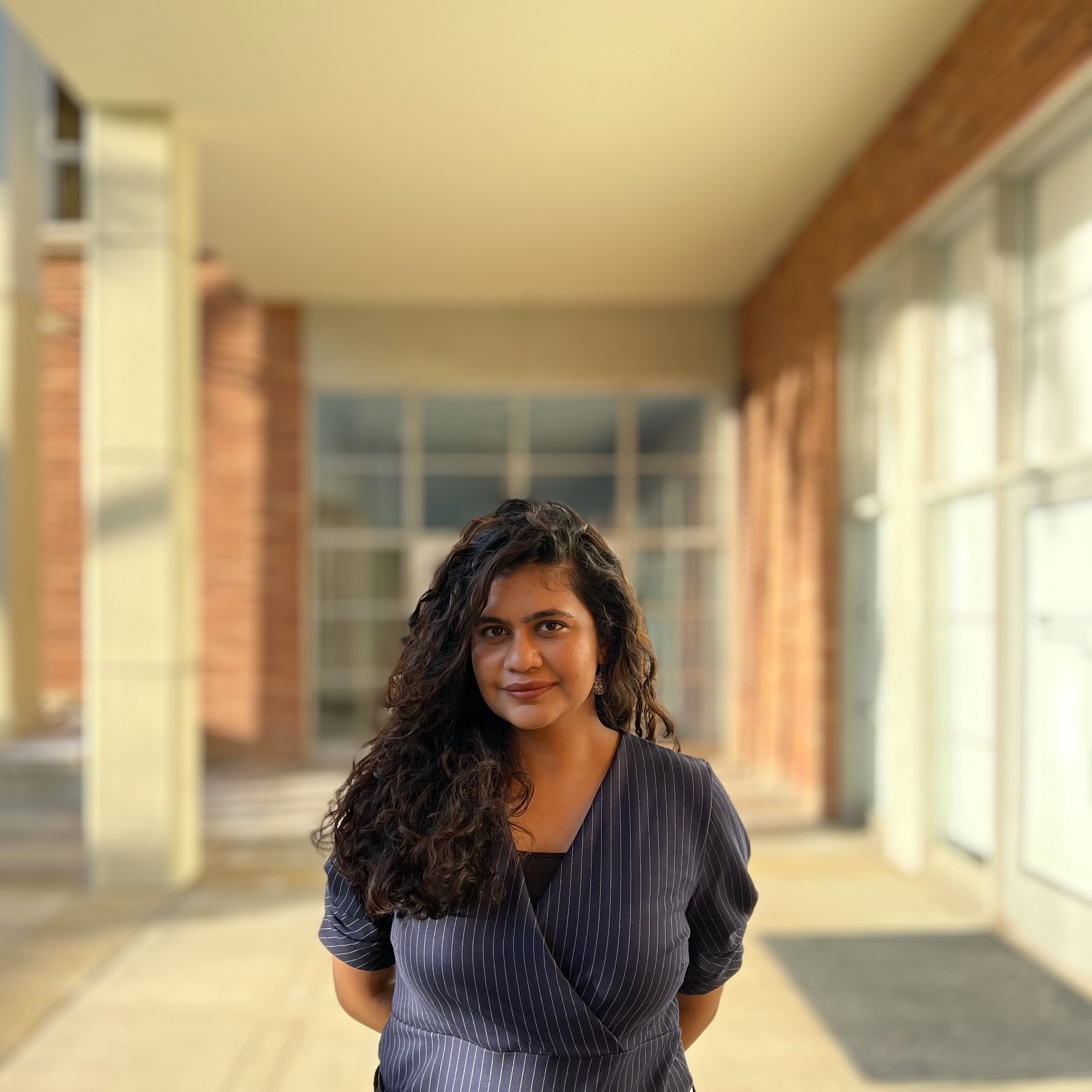
Yashada Wagle is a third year PhD student in Critical Studies at UCLA AUD, and a recipient of the department's Moss Scholarship. Her research focuses on imperial environmental-legislative regimes in British colonial India in the late nineteenth century. She is interested in exploring questions around the histories of spaces of extraction and production as they network between the metropole and the colony, and their relationship with the conceptions of laboring bodies therein. Her master's thesis focused on the Indian Forest Act of 1865, and elucidated the conceptualization of the space of the ‘forest’ through the lenses of its literary, legislative, and biopolitical trajectories, highlighting how these have informed its contemporary lived materiality.
Wagle holds a Bachelor in Architecture (BArch) from the Savitribai Phule Pune University in India, and a Master in Design Studies (History and Philosophy of Design and Media) from the Harvard Graduate School of Design. She was previously a Research Fellow at the Kamla Raheja Vidyanidhi Institute for Architecture and Environmental Studies (KRVIA) in Mumbai, India.
In her spare time, Wagle enjoys illustrating and writing poetry, some of which can be found here .
Dexter Walcott

Dexter Walcott is a registered architect currently in his fifth year with the Critical Studies of Architecture program at UCLA. His research focuses on the Latrobe family and early nineteenth century builders in the Mississippi and Ohio river valleys. He is interested in the role of the built environment in histories of labor, capitalism, steam-power, and industry.

Born and raised in Hong Kong, Joy is a fifth-year PhD student in architecture history. Her research explores geology as antiquity from early 19th – 20th century British colonial Hong Kong and China. She holds a B.A. in Comparative Literature with a focus in German from Middlebury College in 2017, and is a graduate of The New Normal program at Strelka Institute, Moscow in 2018. Previously, she has taught in the Department of Architecture at University of Hong Kong, as well as the Department of Design at Hong Kong Polytechnic University.
After working as a curatorial assistant at Tai Kwun Contemporary in 2019, she has continued the practice of art writing and translation, collaborating with many local Hong Kong artists as well as international curators such as Raimundas Malašauskas. In her spare time, she practices long-distance open water swimming. In 2022, she completed a 30km course at the South of Lantau Island, Hong Kong.
The MA and PhD programs welcome and accept applications from students with a diverse range of backgrounds. These programs are designed to help those interested in academic work in architecture develop those skills, so we strongly encourage that you become familiar with fundamental, celebrated works in the history and theory of architecture before entering the program.
Applicants to the academic graduate programs must hold a Bachelor’s degree, or the foreign equivalent. All new students must enter in the fall quarter. The program is full-time and does not accept part-time students.
Applications for the MA and PhD programs (Fall 2024 matriculation) will be available in Fall 2023, with application deadline of January 6, 2024; please revisit this page for updates. Accepted candidates who wish to enroll must file an online Statement of Intent to Register (SIR) by April 15, 2024.
How to Apply
Applying to the MA and PhD programs is an online process via the UCLA Application for Graduate Admission (AGA).
Completing the requirements will take some time, so we strongly recommend logging in to the AGA in advance to familiarize yourself with the site and downloading the documents and forms you will need to complete your application.
You can also download this checklist to make sure you have prepared and submitted all the relevant documents to complete your application.
Your Statement of Purpose is a critical part of your application to the MA and PhD programs. It is your opportunity to introduce yourself and tell us about your specific academic background, interests, achievements, and goals. Our selection committee use it to evaluate your aptitude for study, as well as consideration for merit-based financial support.
Your statement can be up to 1500 words in length. Below are some questions you might want to consider. You don’t need to answer every question; just focus on the elements that are most relevant to you.
- What is your purpose in applying to the MA or PhD program? Describe your area(s) of research interest, including any areas of concentration and specialization.
- What experiences have prepared you for this program? What relevant skills have you gained from these experiences? Have your experiences led to specific or tangible outcomes that would support your potential to contribute to this field (e.g. performances, publications, presentations, awards or recognitions)?
- What other information about your past experience might help the selection committee in evaluating your suitability for this program? E.g. research, employment, teaching, service, artistic or international experiences through which you have developed skills in leadership, communication, project management, teamwork, or other areas.
- Why is UCLA Architecture and Urban Design the best place for you to pursue your academic goals?
- What are your plans for your career after earning this degree?
Your Personal Statement is your opportunity to provide additional information to help the selection committee evaluate your aptitude for study. It will also be used to consider candidates for UCLA Graduate Division fellowships related to diversity. You can read more about the University of California Diversity Statement here .
Your statement can be up to 500 words in length. Below are some questions you might want to consider. You don’t need to answer every question; just focus on the elements that are most relevant to you.
- Are there educational, personal, cultural, economic, or social experiences, not described in your Statement of Purpose, that have shaped your academic journey? If so, how? Have any of these experiences provided unique perspective(s) that you would contribute to your program, field or profession?
- Describe challenge(s) or barriers that you have faced in your pursuit of higher education. What motivated you to persist, and how did you overcome them? What is the evidence of your persistence, progress or success?
- How have your life experiences and educational background informed your understanding of the barriers facing groups that are underrepresented in higher education?
- How have you been actively engaged (e.g., through participation, employment, service, teaching or other activities) in programs or activities focused on increasing participation by groups that have been historically underrepresented in higher education?
- How do you intend to engage in scholarly discourse, research, teaching, creative efforts, and/or community engagement during your graduate program that have the potential to advance diversity and equal opportunity in higher education?
- How do you see yourself contributing to diversity in your profession after you complete your academic degree at UCLA Architecture and Urban Design?
A Curriculum Vitae (résumé of your academic and professional experience) is recommended but not required.
Applicants must upload a scanned copy of the official transcripts from each college or university you have attended both in the U.S. and abroad. If you are accepted into the program you will be required to submit hard copies. These can either be sent directly from each institution or hand-delivered as long as they remain in the official, signed, sealed envelopes from your college or university. As a general rule, UCLA Graduate Division sets a minimum required overall grade-point average of 3.0 (B), or the foreign equivalent.
As of this Fall 2023 cycle, the GRE is NOT required as part of your application to UCLA AUD. No preference will be given to those who choose to submit GRE scores as part of their application.
However, if you do take the GRE exam and wish to include it as part of your application: More information on this standardized exam can be found at www.ets.org/gre . In addition to uploading your GRE scores, please direct ETS to send us your official score sheets. Our ETS codes for the GRE are below:
UCLA Architecture and Urban Design Institution Code: 4837 Department Code: 4401
We recommend you take the exam at least three weeks before the application deadline as it usually takes 2-3 weeks for ETS to send us the test scores.
If you have received a Bachelor’s degree in a country where the official language of instruction and primary spoken language of daily life is not English, you must submit either a Test of English as a Foreign Language (TOEFL) or an International English Language Testing System (IELTS). Exempt countries include Australia, Barbados, Canada, Ireland, Jamaica, New Zealand and the United Kingdom. This is a requirement that is regardless of your visa or citizenship status in the United States.
To be considered for admission to the M.Arch. program, international students must score at least a 92 on the TOEFL or a 7 on the IELTS exam. Because processing, sending, and receiving TOEFL and IELTS scores can take several weeks, international students must schedule their exam no later than October 31 in order to meet UCLA deadlines. TOEFL scores must be sent to us directly and uploaded as part of the online submission. Our ETS codes for the TOEFL are below:
UCLA Architecture and Urban Design Institution Code: 4837 Department Code: 12
If your score is less than 100 on the TOEFL or 7.5 on the IELTS, you are also required to take the English as a Second Language Placement Examination (ESLPE) on arrival at UCLA. The results of this test will determine any English as a Second Language (ESL) courses you need to take in your first term of residence. These courses cannot be applied towards your minimum course requirements. As such, you should expect to have a higher course load than students not required to take ESL courses.
If you have earned a degree or completed two years of full-time college-level coursework in the following countries, your TOEFL / IELTS and ESLPE requirements will be waived: U.S., U.K., Canada (other than Quebec), Australia, and New Zealand. Please provide official transcripts to demonstrate course completion. Unfortunately, we cannot accept any other documentation to demonstrate language proficiency.
Three (3) letters of recommendation are required. These letters should be from individuals who are familiar with your academic and professional experiences and can evaluate your capacity to successfully undertake graduate studies at UCLA. If you do not have an architecture background please note that we are looking for letters that evaluate your potential as a graduate student, not necessarily your architecture experience.
Letters of recommendation must be sent electronically directly to UCLA by the recommender. When logged in, you can enter the name and email address of each of your recommenders. They will be contacted by email with a request to submit a letter on your behalf. You can track which letters have and have not been received. You can also send reminders to your recommenders to send their letters.
Writing samples should illustrate an applicant’s capacities for research, analytical writing and scholarly citation. Texts may include seminar papers, theses, and/or professional writing.
Please complete and submit the Department Supplement Form to confirm your intention to apply to the MA or PhD program.
- Hispanoamérica
- Work at ArchDaily
- Terms of Use
- Privacy Policy
- Cookie Policy
- Bartlett School of Architecture

Bartlett School of Architecture: The Latest Architecture and News
Top-rated universities for studying architecture in 2024, according to qs world rankings.

QS, Quacquarelli Symonds World University Rankings , has announced the annual list of the top universities to study Architecture and the Built Environment in the year 2024. The ranking evaluates over 1,500 institutions from over 100 locations. The evaluation system has been updated this year to include new metrics such as sustainability, employment outcomes, and international research networks.
The top three contenders, the Bartlett School of Architecture , MIT , and Delft UT , have maintained their ranking from 2023 , with ETH Zurich showing a slight decrease from an equal third position to the fourth. In the sixth position, Harvard University stands out as the top university for employer reputation in this subject. Among the top 10 universities, Politecnico di Milano had the greatest advancement in rankings, moving from the 10th position last year to the 7th.

- Read more »
How the Black Females in Architecture Network is Changing Industry Standards

In early 2018, spatial practitioner and Bartlett lecturer Neba Sere hosted a panel discussion at London 's Architecture Foundation , where she was one of six young trustees. The topic: beginnings. How to go about them, move ahead, and transform them into something that lasts. Six years later, she looks back on the event as a beginning in itself: that day marked the creation of a WhatsApp group that would turn into Black Females in Architecture (BFA). BFA is now a 500-strong global membership network co-directed by Sere and fellow architects Selasi Setufe and Akua Danso .
BFA was initiated in response to the need for visibility of black women and female-identifying people with black heritage in architecture and the built environment . Last year, the group celebrated its fifth anniversary with the showing of a short film and a panel discussion at the Venice Architecture Biennale . Now, after putting in the groundwork of spreading information about the lack of diversity and equality in the industry and increasing their numbers, BFA is gearing up to drive physical change.

Grimshaw Launches a Charitable Foundation Focused on Creative Education

The Grimshaw Foundatio n is a charitable organization aiming to bring access to creative learning tools to a diverse range of young people. The organization was established by Sir Nicholas Grimshaw , in partnership with the partners of international architecture practice Grimshaw. The central purpose is to bring together a globally linked educational community of artists, architects, and designers to support and empower young people. It hopes to reach them at the stage of navigating their career options and help them discover the varied options and opportunities that the creative industry can offer. The Foundation officially launched on 6 July 2022 at the Royal Academy of Arts in London.

The City as an Organism

Nature has continually played muse to architects. Colors and forms from the natural world find themselves embedded in artificial edifices. Buildings are also shaped by patterns of the wind and sun, topography, and vegetation. While architecture is informed by the effects of nature, buildings have been proposed as inert objects that remain static in a biologically evolving world. Anthropocentric concrete “jungles” are devoid of life, separating humans from natural environments and causing imbalances that have manifested as pandemics . What would cities look like if there were no boundaries between humans and ecosystems?

Meet the List of Curators and Exhibitors at the Seoul Biennale of Architecture and Urbanism 2021

Under the theme of " Crossroads: Building the Resilient City ", the 2021 Seoul Biennale of Architecture and Urbanism explores cities through architecture, design, and urban planning by highlighting "the virtues and dialogue of crossroads of knowledge" through exhibitions, installations, and events, that tackle the city of tomorrow led by architect Dominique Perrault . With more than 100 participating cities across five continents and installations by world renowned architects and designers, the Seoul Biennale will take place at various locations across the city from September 16 until October 31st, 2021.

The 2021 Architecture Film Festival London Gives a Platform to Multiple Curatorial Voices

The Architecture Film Festival London , now at its third edition, fosters conversations around architecture, society and the built environment through the medium of film. Along with the International Film Competition, the 2021 programme, debuting on June 2nd and held online, will feature a collection of diverse thematic screenings, essays and events titled "Capsules", which offer a platform to multiple curatorial voices.

Creating Complex Concrete Structures with Augmented Reality and PVC Pipes

The reBENT project, developed by the Research Group 9 of the March 2019-20 Program of the Bartlett School of Architecture (UCL) , explores the interactive relationship between augmented reality (AR) and manual construction processes using PVC pipes –highly resistant and cheap– as a base research material. In addition to taking advantage of its active bending properties to interact with AR, this material provides a fast and affordable system for the creation of complex concrete structures made by weaving together a series of bent PVC pipes and reinforcing bars, which are then used as formwork for glass fiber reinforced concrete (GFRC).
So far, the exploration of this hybrid approach –neither purely analog nor purely automated– has led to the design of prototypes, architectural elements, and habitable structures. In addition, the team developed an augmented reality platform for Microsoft Hololens in order to guide the construction and customization process through holograms.
City of Ladies

Penelope Haralambidou's project 'City of Ladies' studies 'The Book of the City of Ladies', 1405, by Italian/French medieval author Christine de Pizan (1364 – c.1430). The text is part of a compilation assembled for Queen Isabeau of Bavaria between 1410 – 1414 (Harley MS 4431) the largest surviving collected manuscript of her works and one of the foundation manuscripts at the British Library. In the book, de Pizan describes her visitation by three female Virtues, Reason, Rectitude and Justice, who commission her with the construction of an imaginary city inhabited solely by women. Conflating the act of writing a book
Spotlight: Peter Cook

As one of the founding members of Archigram , the avant-garde neo-futurist architecture group of the 1960s, the British architect, professor, and writer Sir Peter Cook (born 22 October 1936) has been a pivotal figure within the global architectural world for over half a century; one of his most significant works from his time with Archigram, The Plug-In City , still invokes debates on technology and society, challenging standards of architectural discourse today.

The World's Top Universities for Studying Architecture in 2019

Quacquarelli Symonds (QS) has revealed it's ranking of the world’s top universities for the study of Architecture / Built Environment for 2019 , based upon academic reputation, employer reputation and research impact.
On this edition, the Bartlett School of Architecture at UCL (University College London) has been named the best university for studying architecture, taking MIT 's place, which has topped the rankings for the past four years .
Keep reading and check out the complete ranking.
Centre Pompidou hosts Living Sculptures investigating Life in a Digital Age

The renowned Centre Pompidou in Paris is to open its doors to two living sculptures, embodying the future forms of spatial intelligence. The exhibition, titled “ La Fabrique du vivant ” [The Fabric of the Living], will feature “ H.O.R.T.U.S. XL Astaxanthin.g ” by ecoLogicStudio in collaboration with Innsbruck University - Synthetic Landscape Lab, CREATE Group / WASP Hub Denmark - University of Southern Denmark, and " XenoDerma" by Urban Morphogenesis Lab directed by Claudia Pasquero at The Bartlett UCL.
Running from February 20th to April 15th, the exhibition will examine the notion of “living” in a digital era, where new interactions are emerging between the fields of life science, neuroscience, and synthetic biology. Permeating the entire urbanscape, this global, digital apparatus “encompasses miniaturization, distribution, and intelligence of manmade urban networks of in-human complexity, engendering evolving processes of synthetic life on Earth.”

The Top 200 Universities in the World for Architecture 2018
.jpg?1519827682)
Global higher education analysis firm Quacquarelli Symonds (QS) has revealed its rankings of the world’s top universities for the study of Architecture / Built Environment for 2018. The eight edition of the survey compared 2,122 institutions across the globe offering courses in architecture or the built environment, narrowing down the list based on criteria including academic and employer reputation.
For the fourth straight year, MIT has topped the rankings, once again coming out ahead of the Bartlett School of Architecture and the Delft University of Technology (TU Delft) in 2nd and 3rd respectively. Read on for the full rankings.
7 Alternative, Interdisciplinary Graduate Courses for Architects

As final juries draw to a close, graduating architecture students are left with a crucial decision to make. While some might take a plunge into the scary real world looking to gain professional experience, others might choose to further reinforce their architecture education and skill set. Of the latter, most enroll in an MArch program, or take well-trodden paths into urban design and planning, landscape architecture, historic preservation, or theory and criticism. But in an increasingly complex world faced with myriad problems, what about those graduate architects looking to bolster their education in other related disciplines that will give them a more unique perspective on design problems? Here, we shortlist seven alternative, interdisciplinary graduate programs offered by architecture schools worldwide.
"Faith Estates" Proposes a New Approach to Religious Pilgrimage by Excavating Holy Sites

In a time of what seems to be ever-increasing religious and political conflict, Bartlett students Akarachai Padlom, Eleftherios Sergios, and Nasser Alamadi instead chose to focus on collaboration between religions in their thesis project entitled “Faith Estates,” which outlines a new method of mass religious tourism . In an area around the Dead Sea characterized by disputed boundaries and conflicting ownership claims, the group aims to reimagine the relationship between the world’s three monotheistic religions, but also to rethink the relationship between religion, tourism, and the landscape. The design consists of large-scale excavation sites which form tourist resorts along a pilgrimage route with the goal of forming a mutually beneficial relationship.

The Top 200 Universities in the World for Architecture 2017
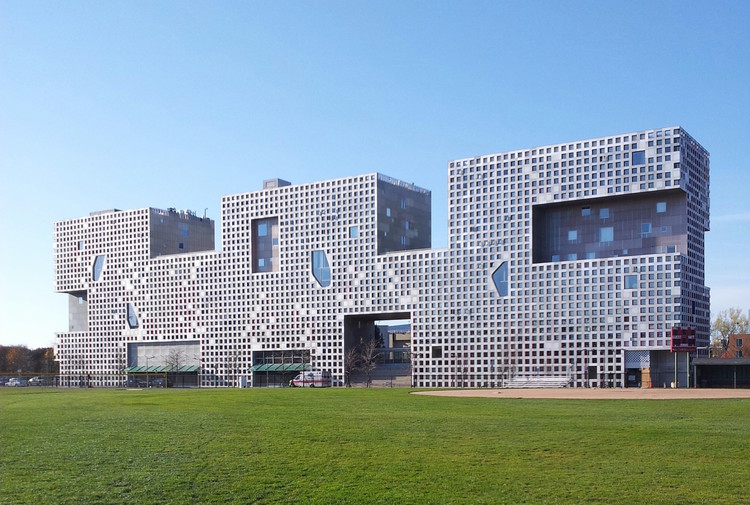
Global higher education analysis firm Quacquarelli Symonds (QS) has released in 2017 rankings of the world’s top universities for the study of Architecture & Built Environment. This year, for the seventh edition of the survey, QS has expanded the ranking to list the world’s top 200 schools, including institutions across all six inhabited continents.
For the third year in a row, MIT has topped the list, finishing ahead of the Bartlett School of Architecture and the Delft University of Technology (TU Delft). Read on for the full rankings.
80 at 80 Exhibition to Celebrate the Architectural Career of Sir Peter Cook

The Bartlett School of Architecture , UCL, is celebrating the opening of its new building at 22 Gordon Street with an exhibition of work by visionary architect Sir Peter Cook . Running from 23 February to 10 March 2017, the exhibition marks Sir Peter’s 80th year with a celebration of 80 of his inspired and pioneering projects.
Experience the "Brutal Faith" of Gottfried Böhm's Pilgrimage Church in Neviges

This exclusive photo essay by Laurian Ghinitoiu was originally commissioned for the fifth issue of LOBBY . Available later this month, the latest issue of the London-based magazine—published in cooperation with the Bartlett School of Architecture—examines the theme of Faith as "a fervent drive, a dangerous doctrine, a beautifully fragile yet enduring construct, an unapologetic excuse, a desperate call for attention and a timely consideration on architectural responsibility."
In 1986 the Pritzker Architecture Prize announced their first German laureate. In a speech at the ceremony in London’s Goldsmiths’ Hall, the Duke of Gloucester suggested that the prize “may not guarantee immorality,” inferring, perhaps, that not even the most prestigious award in architecture could compete with an œuvre so compact, focussed and enduring as that of Gottfried Böhm – a “son, grandson, husband, and father of architects.”
.jpg?1474570511)
Call for Submissions: LOBBY No.5 – "Faith"

For centuries, faith has been a source of immeasurable blessings as well as uncountable catastrophes. People, no matter how different, have always felt protected under the aegis of a common belief and united to accomplish the unthinkable. But its fruitful potentials are only equal to its destructive dangers. Faith can be the most untameable of fires, and with the promise for righteousness or virtue it can tear families apart, close down borders, promote genocide, foster war.
Search form
In Memoriam
Bartlett, among the first U.S. scholars to study in the Qing archives

Beatrice (Betsy) Bartlett ’80 Ph.D., professor emerita of Chinese history who was among the first U.S. scholars to research the Qing archives in Beijing died on April 1 in Branford, Connecticut after a long illness. She was 95.
Her academic story was an unusual one, certainly one of the more unusual for a contemporary member of the Yale faculty. A graduate of Smith College, Bartlett taught at the Brearley School, a private girl’s school in New York City, for 12 years before coming to Yale as a graduate student in 1967. She eventually received her Ph.D. in 1980, after 10 years of research in Taiwan, and then, after a postdoc at Harvard, she joined the Yale faculty in 1983.
When she retired, it marked the first time that a woman in Yale’s Faculty of Arts and Sciences who had started as an assistant professor had been promoted through the ranks of associate professor, full professor, and, upon her retirement, professor emerita.
Bartlett’s specialization was modern Chinese history, covering the long period between 1600 to the present. Because of the absence of diplomatic relations between the U.S. and China during her time as a graduate student, her dissertation research had to be carried out in Taiwan, chiefly in the National Palace Museum’s archives of the Qing dynasty. Following the establishment of diplomatic relations, in 1980, she was one of the first American scholars to undertake research in the Qing archives in Beijing.
In 1985 she was selected as one of nine representatives to participate in a Beijing conference and tour of archival sites across China, and this conference and tour inspired her chief research interest: the history and use of the archives of the Qing dynasty, a subject on which she published 20 articles. Her research on the Qing archives led to her major work, “Monarchs and Ministers: The Grand Council in Mid-Ch’ing China, 1723-1820.”
Peter Perdue, a professor emeritus of Chinese history at Yale, described her death as “a great loss for Qing studies.”
“ When I first went to Taiwan to work on Qing archival materials in 1979, Betsy Bartlett was there, famed as the senior guru of the Palace Museum researchers, an invaluable guide to finding documents, and even more important, gaining the respect of the archival staff,” he wrote after hearing of her death.
“ Her book on the development of the Grand Council is still a classic work on this vital method of communication in the Qing bureaucracy, required reading on anyone’s list. She understood the value of studying Manchu documents as well as Chinese, and encouraged others to follow this path.”
Bartlett’s personal story was as extraordinary as her academic trajectory. Born in New Haven, her Yale summa cum laude father, Russell Sturgis Bartlett, a member of Yale’s Class of 1917 who also received his Ph.D. in 1924, was for some years a Yale professor of physics. But her “blue line” was extraordinarily long on both sides, going back to her great-great-great-great-grandfather, who was a member of the Yale Class of 1753, and included a host of Daggets and Bartletts, two legendary Yale names.
Her ancestors include Russell Sturgis, the architect of Battell Chapel, Farnam Hall, Durfee Hall, and the President’s House at 43 Hillhouse Avenue; David Daggett, a member of the Class of 1783, one of the three founders of Yale Law School; and Anna Alice Cutler, who was among the earliest women to receive a Ph.D., in philosophy, and who taught for many years at Smith. Yung Wing, the first Chinese student to graduate from a North American university, married the daughter of the sister of her great-grandfather. The Yung Wing grandchildren were her third cousins, and she knew them all.
She continued her research long after her retirement and eventually moved to the retirement community of Evergreen Woods in Branford, Connecticut, where she lived in an apartment next to her close friend Marie Borroff, Sterling Professor of English, who died in 2019.
Bartlett is survived by three nephews, Russell Bartlett ’84, Michael Bull, and Thomas Bull; four nieces, Sharon Sage, Martha Ann Roundtree-Paris, Mary-Ellen Yeomans, and Rodanne Bartlett; as well as several great nieces and nephews.
The Bartlett family and the university will hold a service in her memory at 1:30 p.m. Oct. 19, 2024 at Battell Chapel, 400 College Street, New Haven.
Campus & Community

Low-risk long-term cancer survivors more likely to die of noncancer causes

Two Yale Ph.D. students awarded prestigious HHMI Gilliam Fellowships

Lecture series explores Late Antique and Byzantine art and architecture

Study shows promise of immunotherapy treatment for penile cancer
- Show More Articles

The Bartlett School of Architecture
- Exhibitions
- Publications
- Equality, Diversity and Inclusion

Save The Date for The Bartlett Autumn Show 2024
22 July 2024
The Bartlett Autumn Show 2024 will take place from Tuesday 24 September – Sunday 06 October. Our annual postgraduate show, for the first time, combines seven programmes in one event, including our new Cinematic and Videogame Architecture MArch.

The Bartlett will launch its annual Autumn show this year on Tuesday 24 September, running until Sunday 06 October. This year brings together two concurrent shows – The Bartlett B-Pro Show and The Bartlett Autumn Show – into one exhibition for the first time, showcasing the work of Master's students across seven programmes. The exhibition will run in the school's now signature dual format, with a physical show at The Bartlett's Bloomsbury home, 22 Gordon Street, and a full online show on our award-winning, interactive virtual platform, where visitors around the world can explore each project in-depth.
This year's physical show will span five floors at 22 Gordon Street, giving visitors the opportunity to see a truly diverse and expansive collection of work by our postgraduate students.
The Bartlett Autumn Show 2024
Our annual postgraduate show, taking place at the start of the school year, celebrates groundbreaking and multidisciplinary design projects from seven of the school's forward-thinking Master's programmes:
- Architectural Design MArch – exploring the frontiers of advanced architecture and design, and their convergence with science and technology.
- Urban Design MArch – the study of cities, their form and their nature, as well as the complexities of global urbanisation.
- Architectural Computation MSc/MRes – empowering students to use computation to create innovative architectural solutions for the future.
- Bio-Integrated Design MArch/MSc – teaching students to develop design solutions for a world shaped by environmental factors.
- Landscape Architecture MA/MLA – dual programme considering landscape interventions through imaginative design, strategic thinking and technical knowledge.
- Architecture & Historic Urban Environments MA – pioneering a fresh and critical approach to architecture and historic urban environments.
- Cinematic and Videogame Architecture MArch – developing design projects at the convergence of architecture, film and videogames.
The show will take place at The Bartlett's Bloomsbury campus, with a full accompanying show online in our award-winning, innovative online show space, www.bartlettarchucl.com , produced by The Bartlett in collaboration with Hello Monday .
More information
- Exhibitions at The Bartlett School of Architecture
- Explore past shows in our shows archive
Image: Richard Stonehouse
Related News

IMAGES
VIDEO
COMMENTS
The Architectural Design thesis consists of projects and texts that share a research theme and have a productive relationship. The projects may be drawn, written, filmed, constructed, or make use of whatever media is appropriate to the research subject. ... Within The Bartlett School of Architecture, the Architectural Design MPhil/PhD programme ...
The Bartlett School of Architecture. 22 Gordon Street. London. WC1H 0QB. +44 (0)20 3108 9646. [email protected]. Share. Bartlett Design Research Folios showcase some of the research done by academic staff at The Bartlett School of Architecture, part of the Bartlett Faculty of the Built Environment at the University College London, is one ...
Architectural Design Thesis Initial Projects (45 credits) Module coordinator: ... Frédéric Migayrou is Chair, Bartlett Professor of Architecture at The Bartlett School of Architecture and Deputy Director of the National Museum of Art, Centre Pompidou in Paris. He was the founder of the Frac Center Collection and of ArchiLab, the international ...
PhD Research Projects 2020 was the fourteenth annual conference and exhibition of doctoral research at The Bartlett School of Architecture. The accompanying publication presents work by students undertaking an Architectural Design or Architectural History & Theory MPhil/PhD at The Bartlett. The book is available to read online on Issuu.
The Bartlett's Architectural Computation MSc and MRes programmes engage and advance the main technologies through which tomorrow's architecture will be both designed and constructed. The programmes are designed to provide students with the depth of understanding needed to utilise computation fully in the context of design, research and ...
The Bartlett School of Architecture presents 12 student projects from its annual summer show. Dezeen staff | 4 August 2021. A digital garden celebrating queer icons and a new domestic space ...
In the UK's latest Research Excellence Framework exercise (REF 2021), The Bartlett Faculty was ranked first for Research Power, with 91% of research submitted deemed 'world leading' or 'internationally excellent'. Research at The Bartlett School of Architecture extends the boundaries of our current knowledge, and designs our world of ...
Tutors: Marjan Colletti, Kostas Grigoriadis, Ana Monrabal-Cook, Max Dewdney, Sara Shafiei, Luke Olsen and Elizabeth Dow. School statement: "The Bartlett School of Architecture is one of the most ...
She also holds a Master of Arts degree with distinction in Architectural History from the Bartlett School of Architecture, University College London. ... His architecture thesis investigated the crematorium and temple as sensorial infrastructure, and was presented at World Architecture Congress at Seoul in 2017. Previously Dey worked in the ...
80 at 80 Exhibition to Celebrate the Architectural Career of Sir Peter Cook. February 17, 2017. The Bartlett School of Architecture, UCL, is celebrating the opening of its new building at 22 ...
For the second year running, The Bartlett is ranked #1 in the world for Architecture and the Built Environment, and remains #1 in the UK for the tenth year in a row, in the QS World University Subject Rankings 2024. Explore our programmes. Discover and apply for The Bartlett's range of world-class degree programmes. Explore The Bartlett Shows
Public Led Co-production of Heritage. VisAge: Augmented Reality for Cultural Heritage. Spatial Dynamics of the London Furniture Industry. Way-finding Signals for Somers Town Cycle to School Network. Knowledge Transfer Partnership: Big Data in the Office. Augmented Urban Reality. Three Dimensional Real-Time Computer Based Space Syntax Analysis.
Bartlett's specialization was modern Chinese history, covering the long period between 1600 to the present. Because of the absence of diplomatic relations between the U.S. and China during her time as a graduate student, her dissertation research had to be carried out in Taiwan, chiefly in the National Palace Museum's archives of the Qing ...
Doctoral. The Bartlett School of Architecture has a world-class and thriving research community. Students study towards their PhD within five different streams. We are a multi-disciplinary department with researchers active in architectural design, history, theory, practice, computation and space syntax, who bring together approaches from the ...
Yanqi Huang was invited to join the programme's sixth cohort, and is the first Architectural History MA student from The Bartlett to join the programme. New Architecture Writers (N.A.W.) is an experiment in radical architectural pedagogy with the intention of disrupting the conventional institutions of architectural discourse.
The Bartlett Autumn Show 2024 will take place from Tuesday 24 September - Sunday 06 October. Our annual postgraduate show, for the first time, combines seven programmes in one event, including our new Cinematic and Videogame Architecture MArch. The Bartlett will launch its annual Autumn show this ...